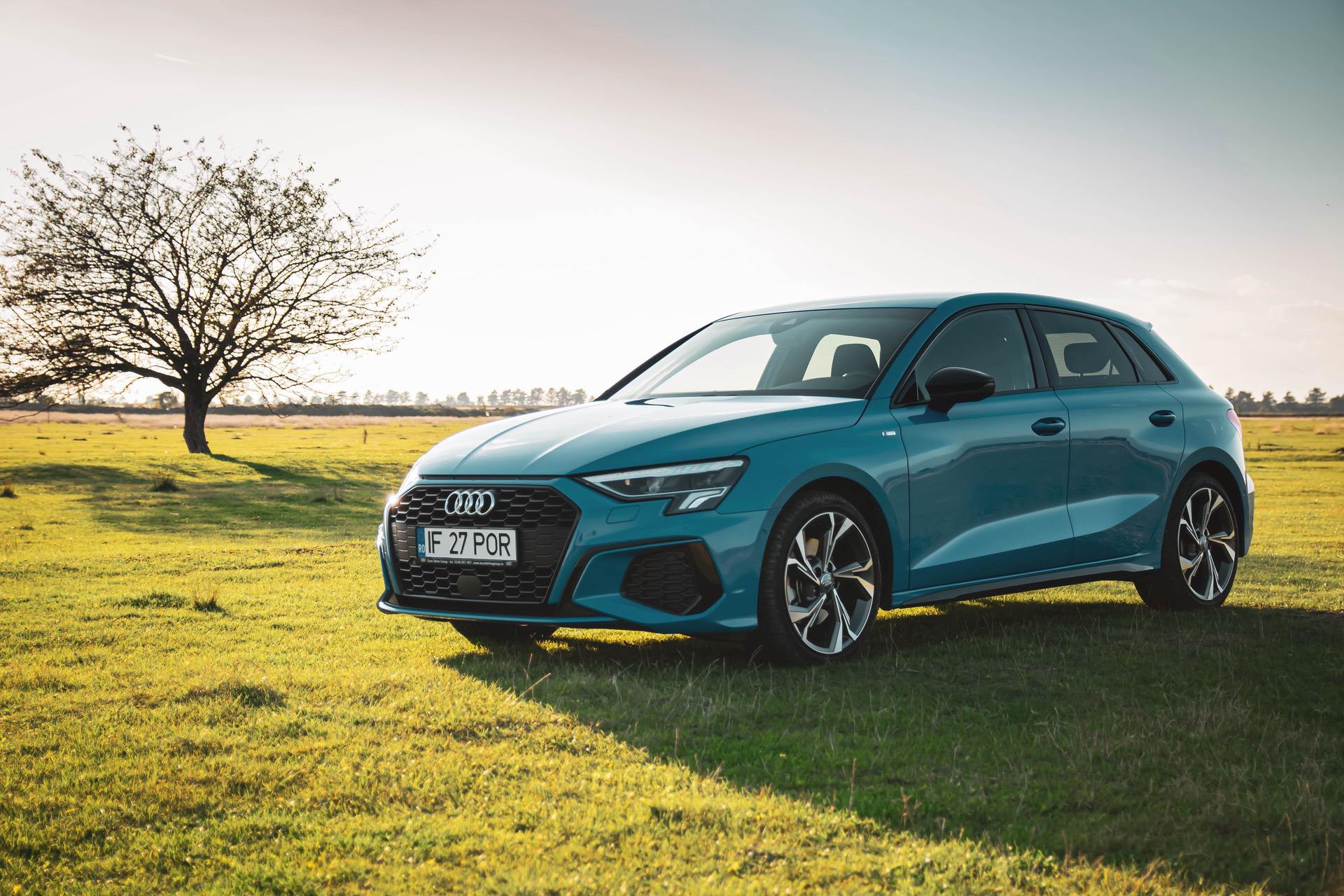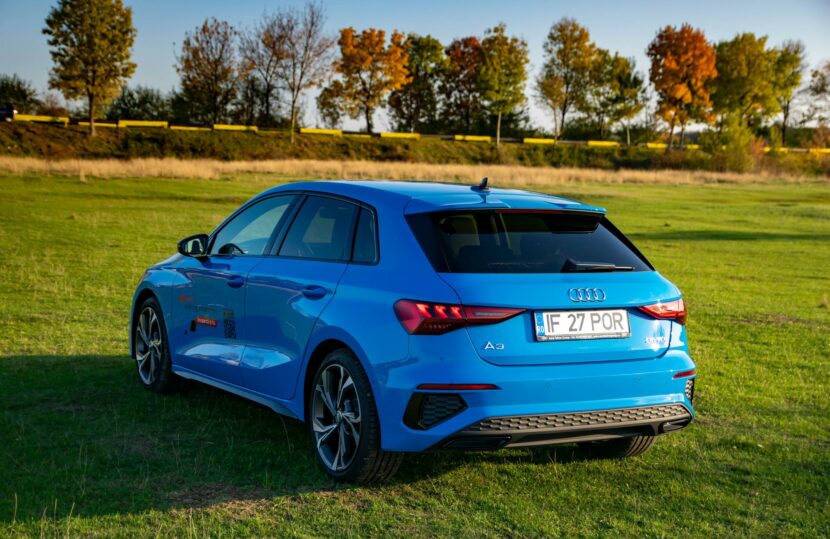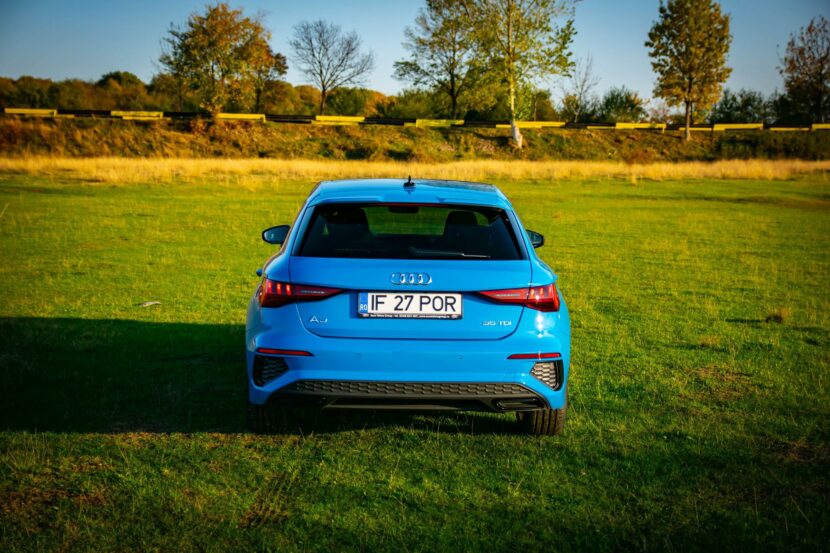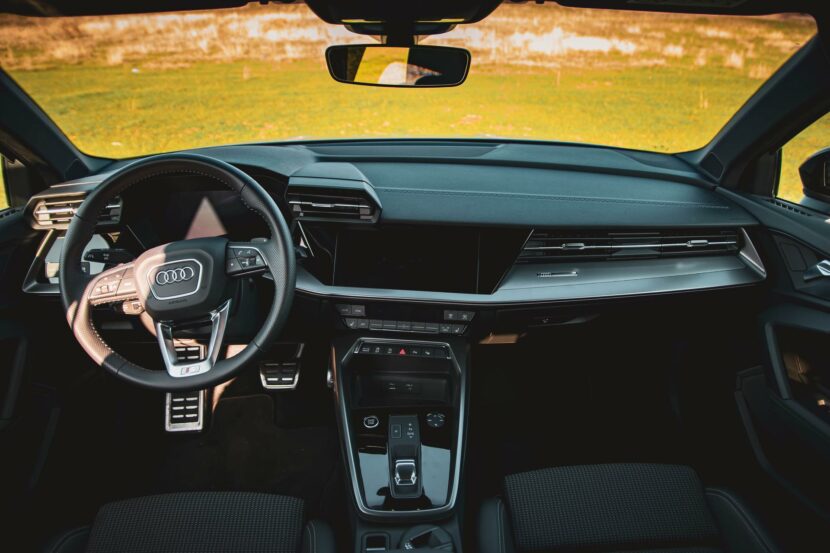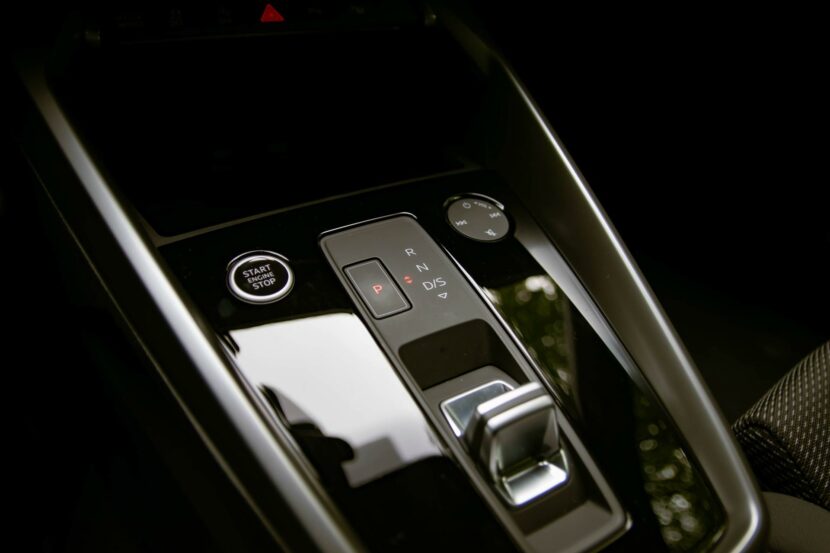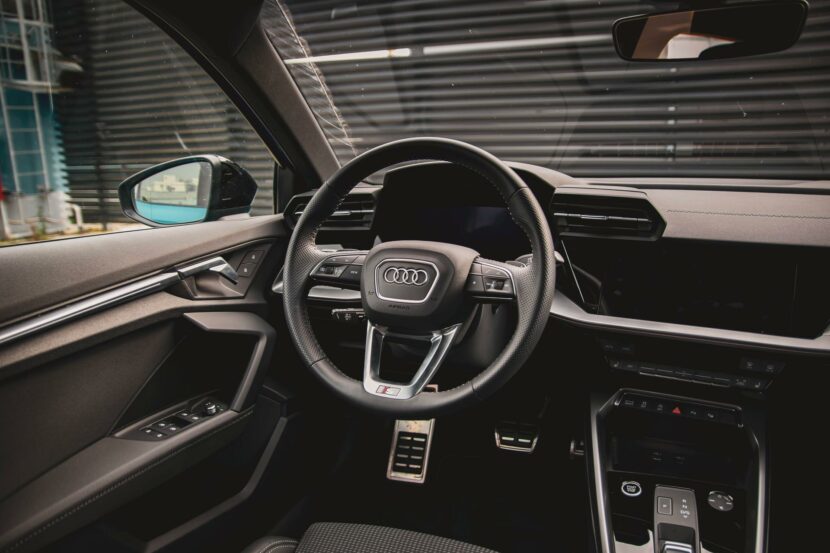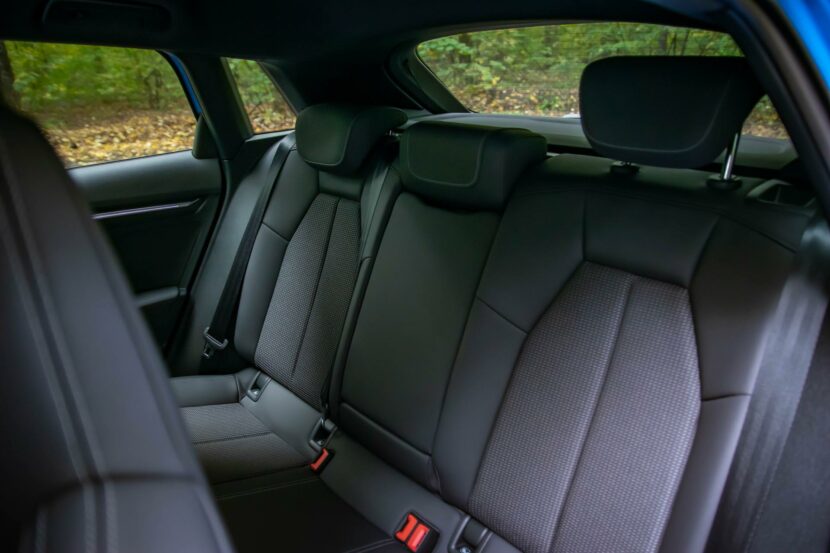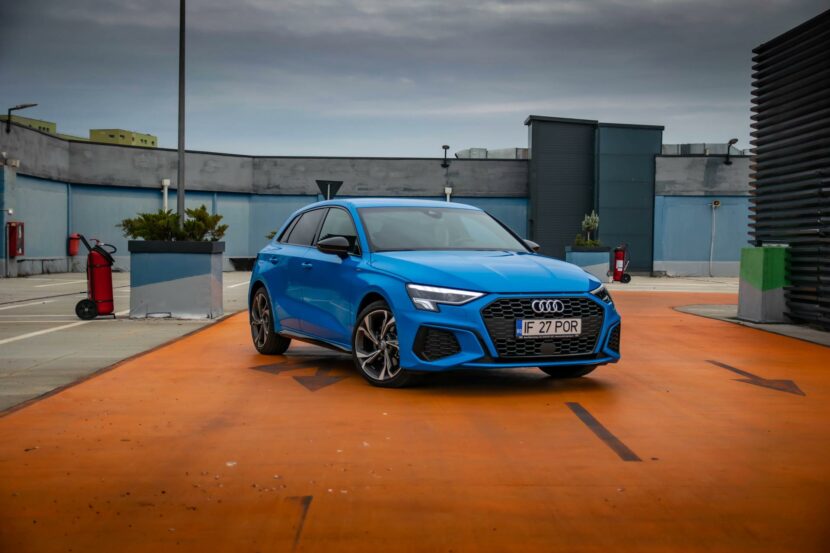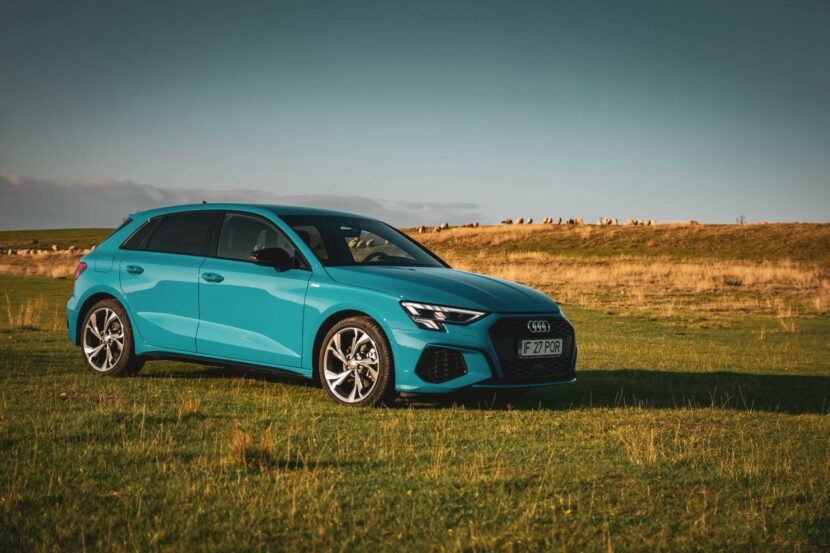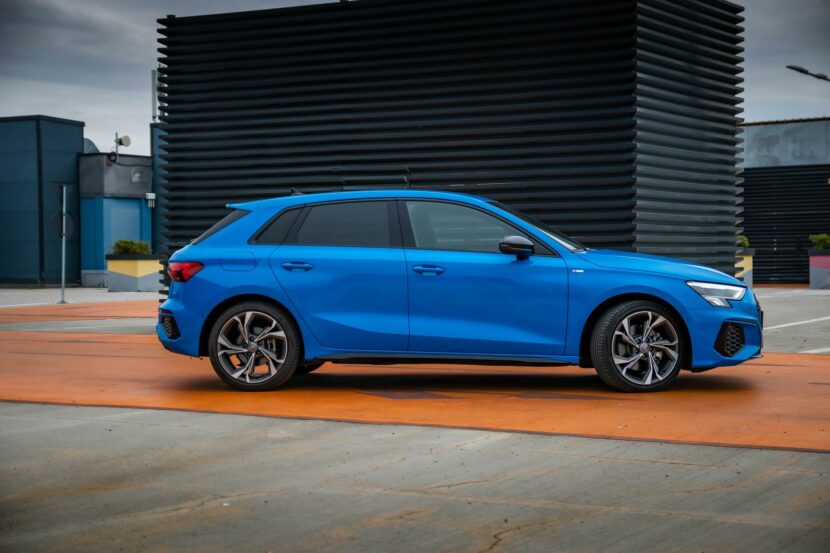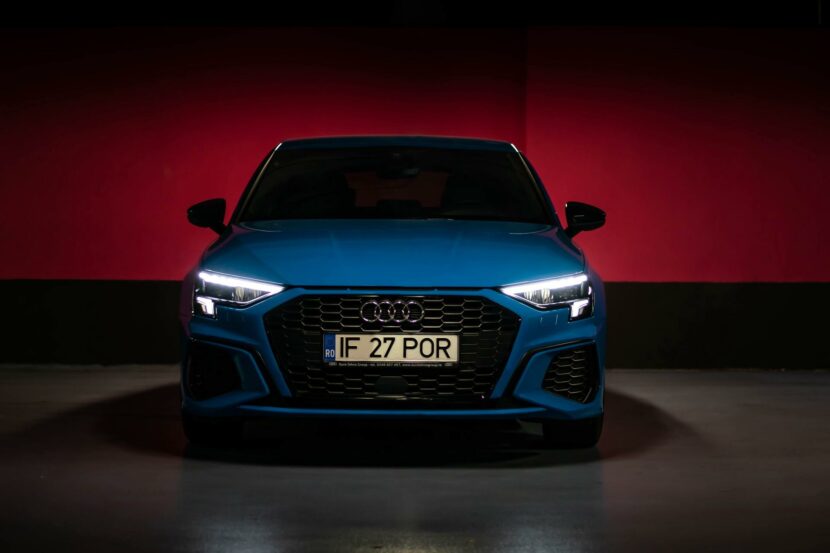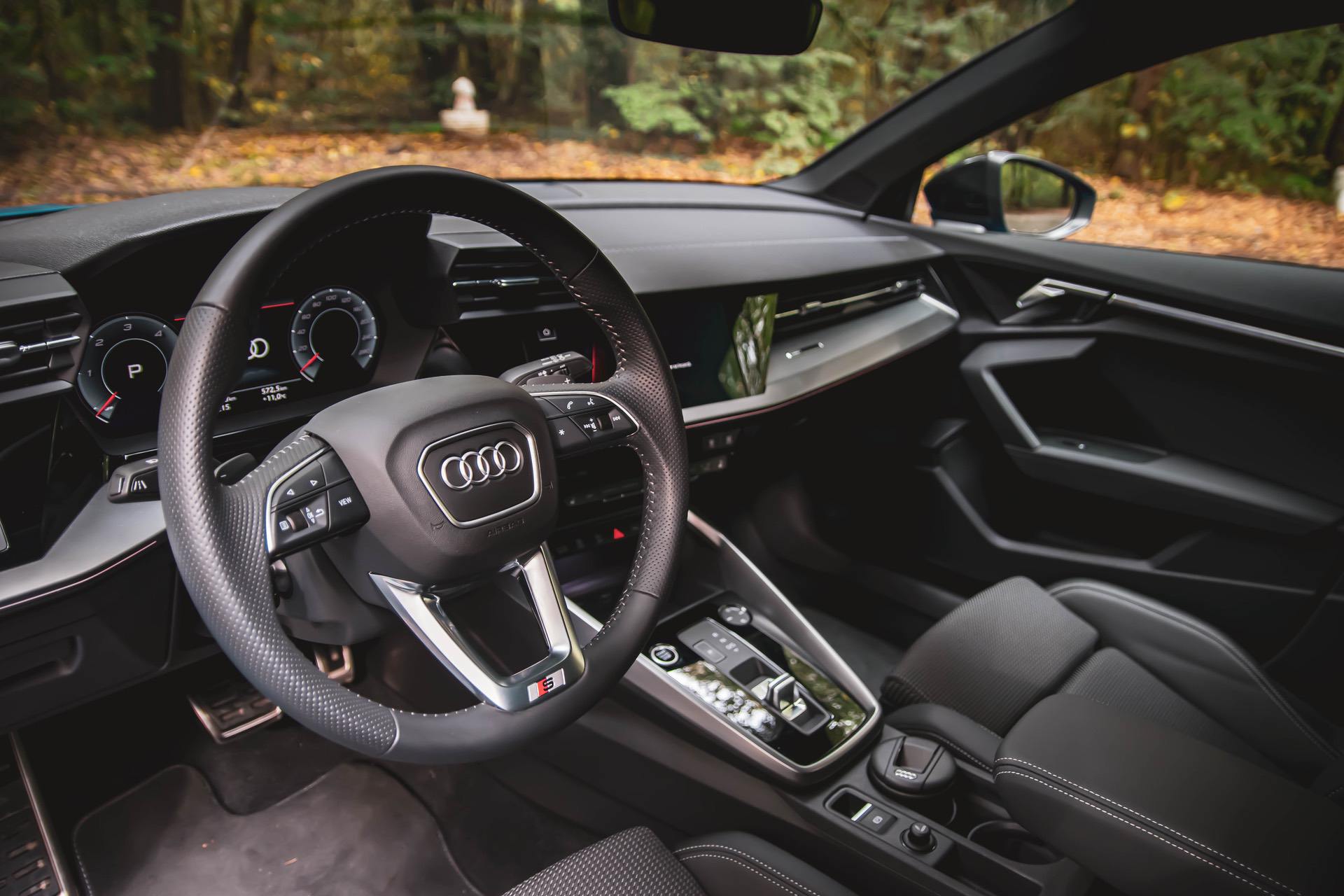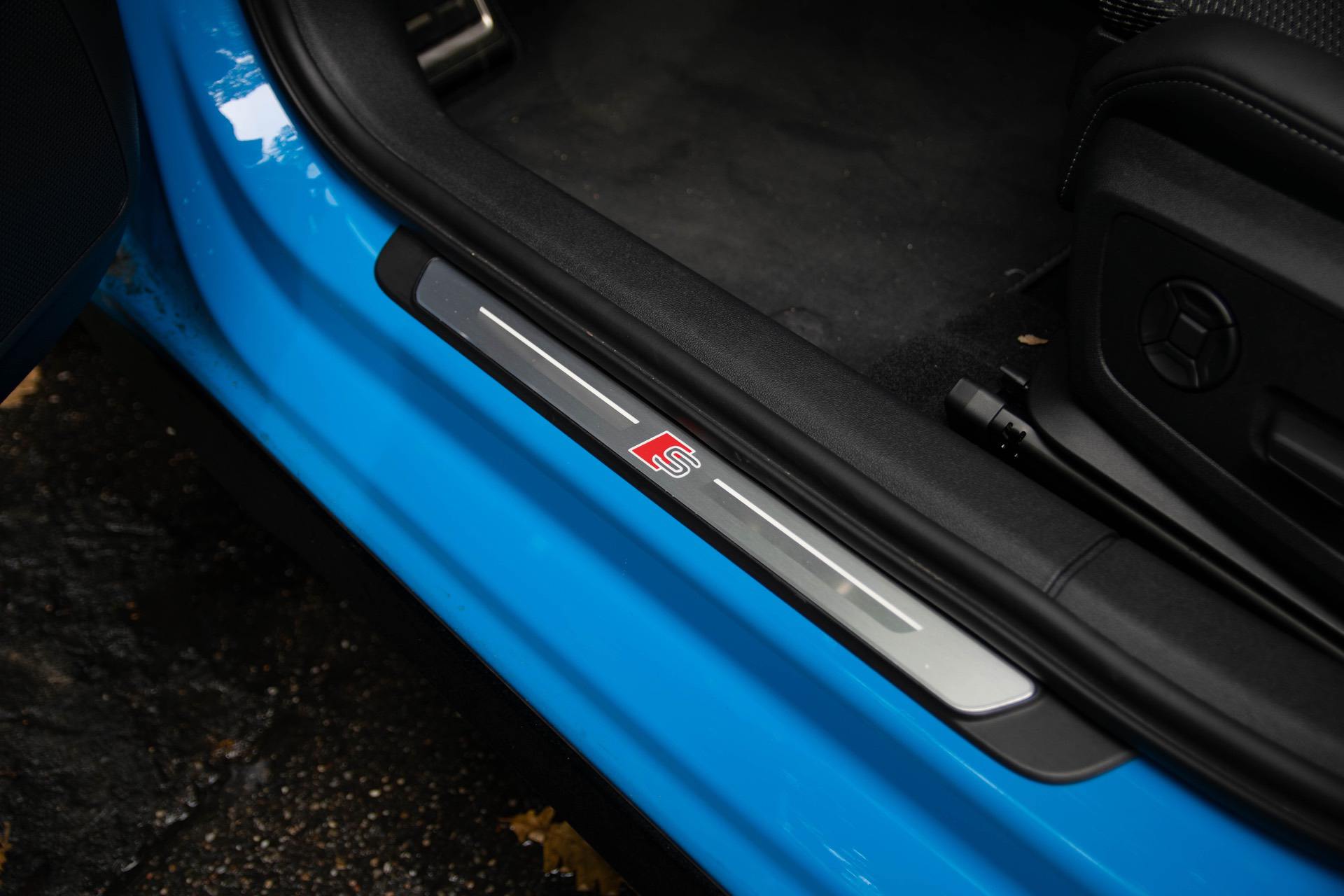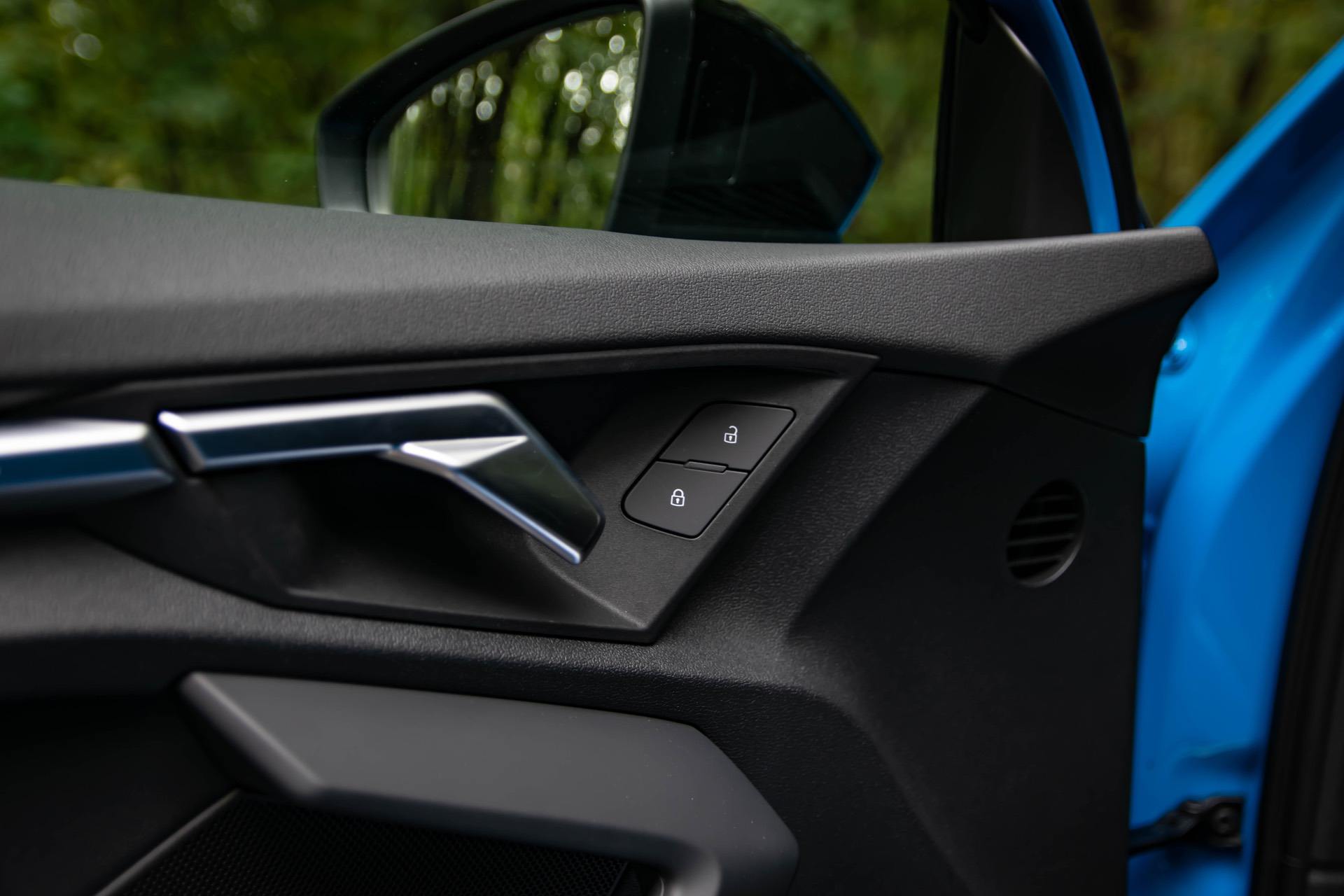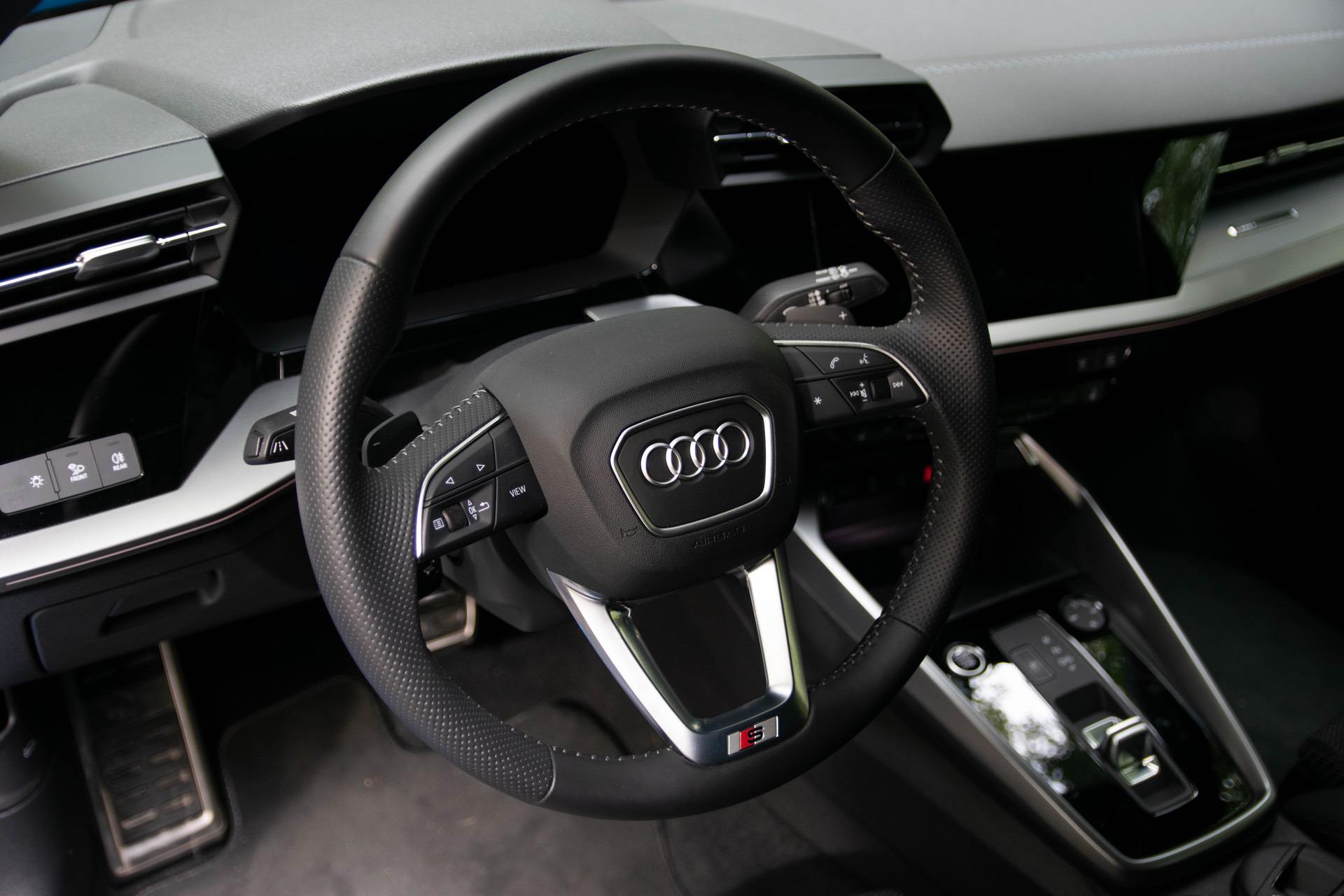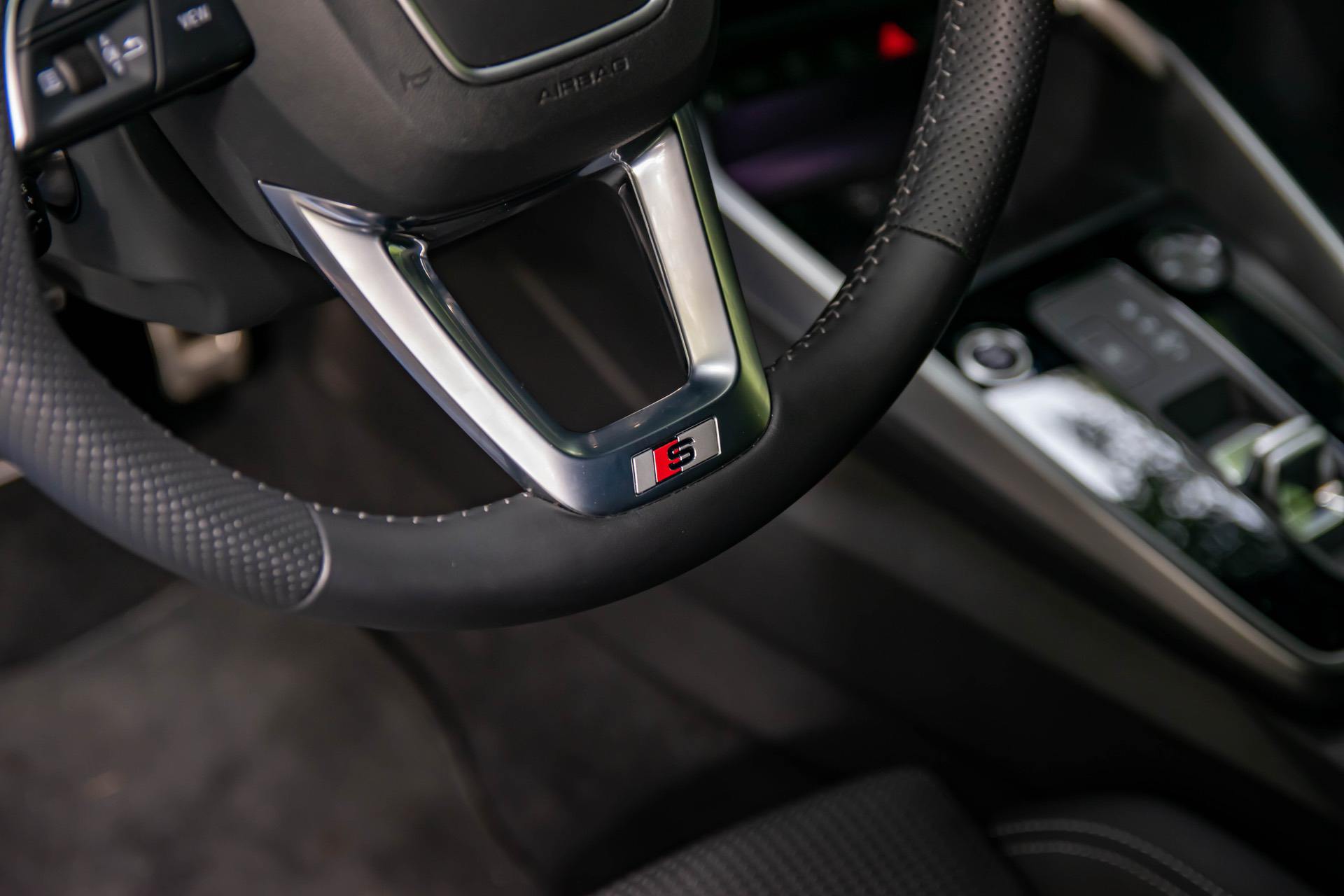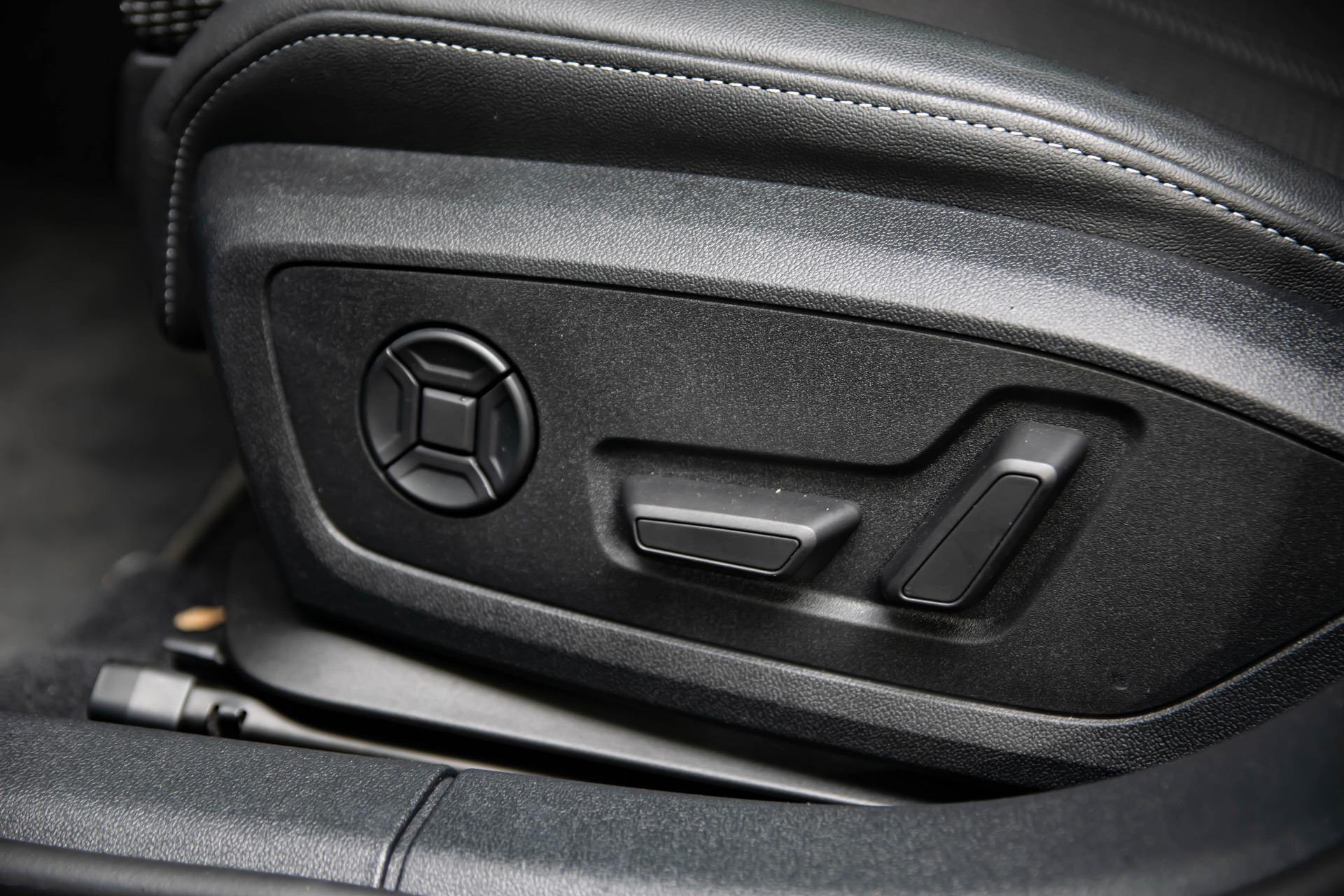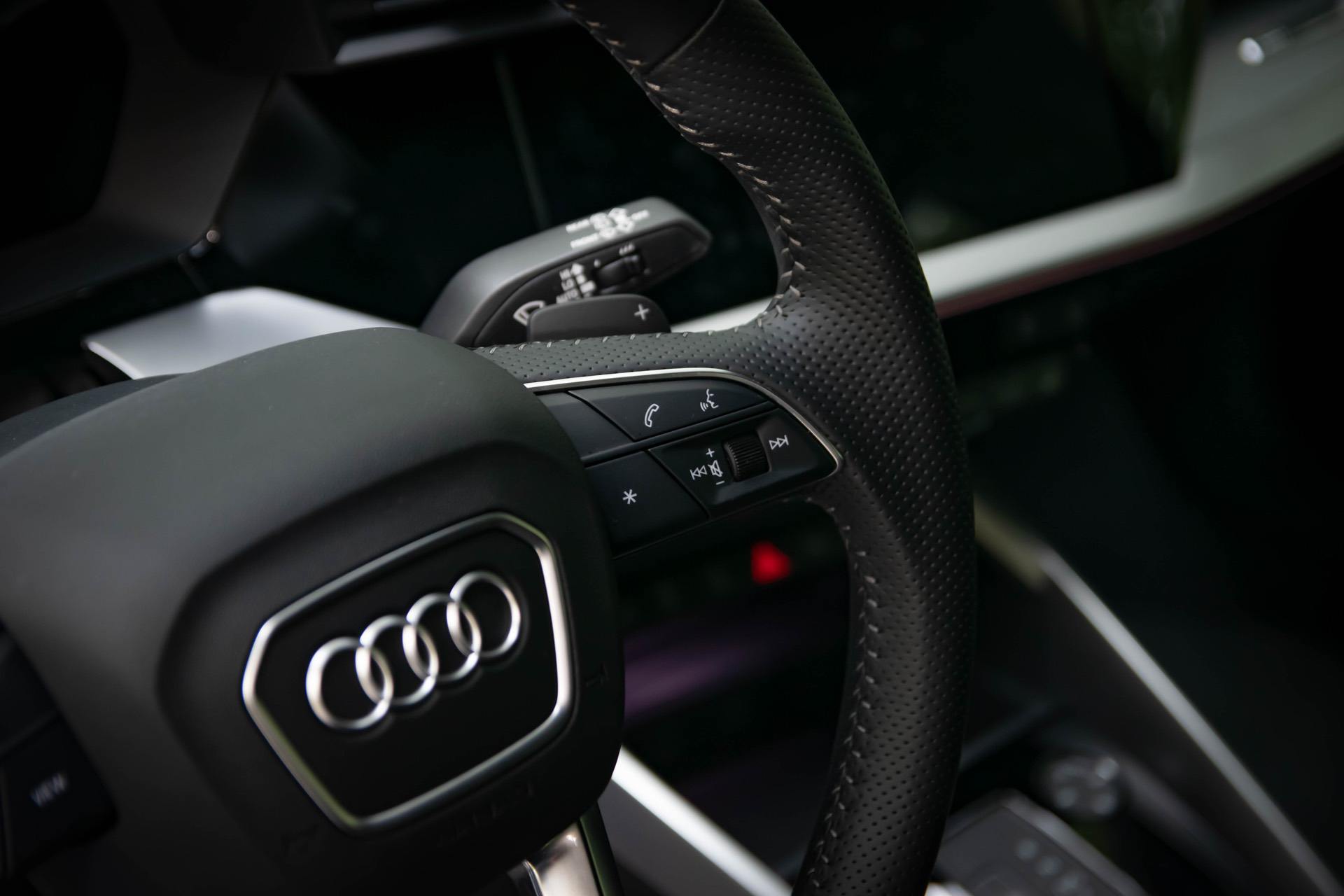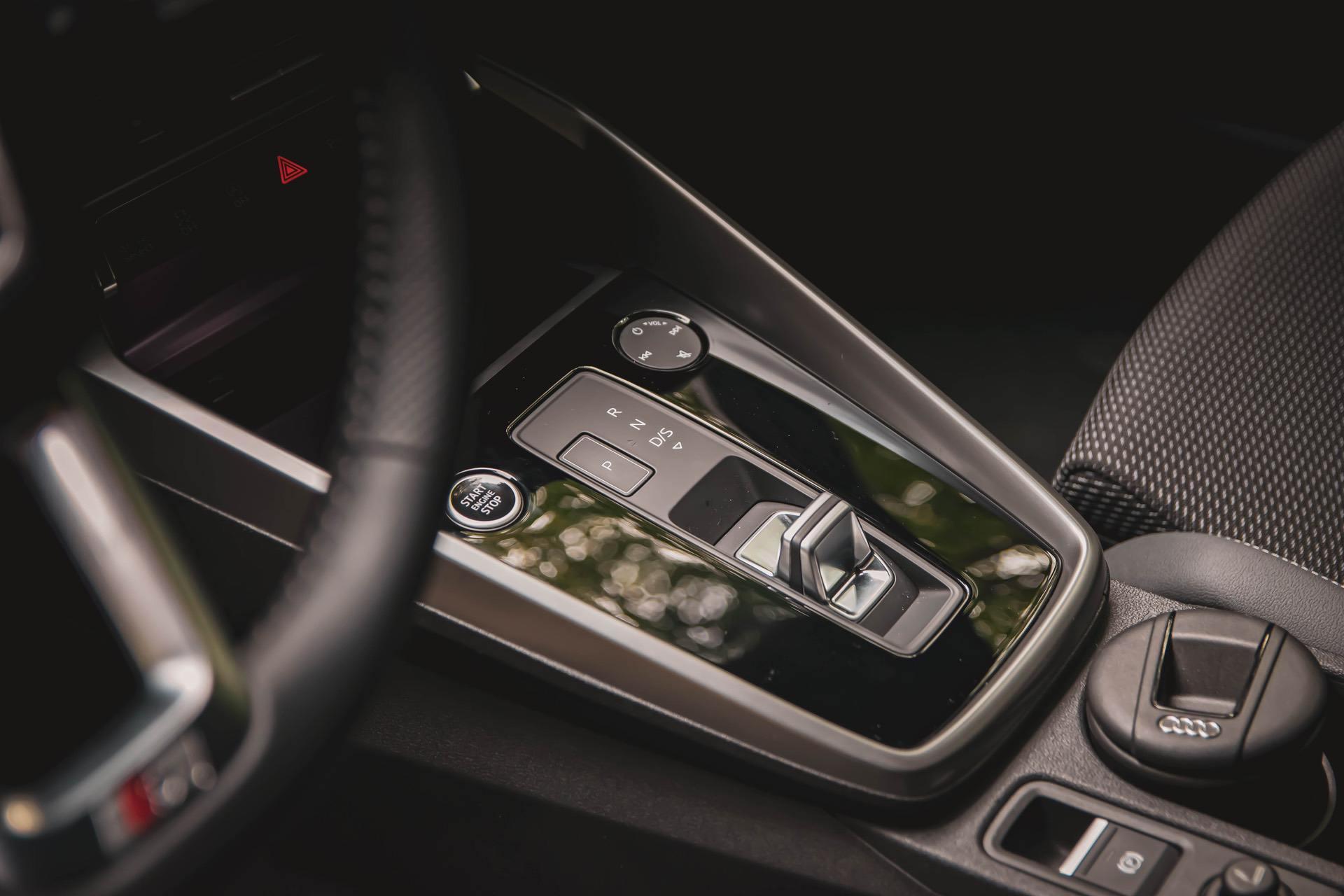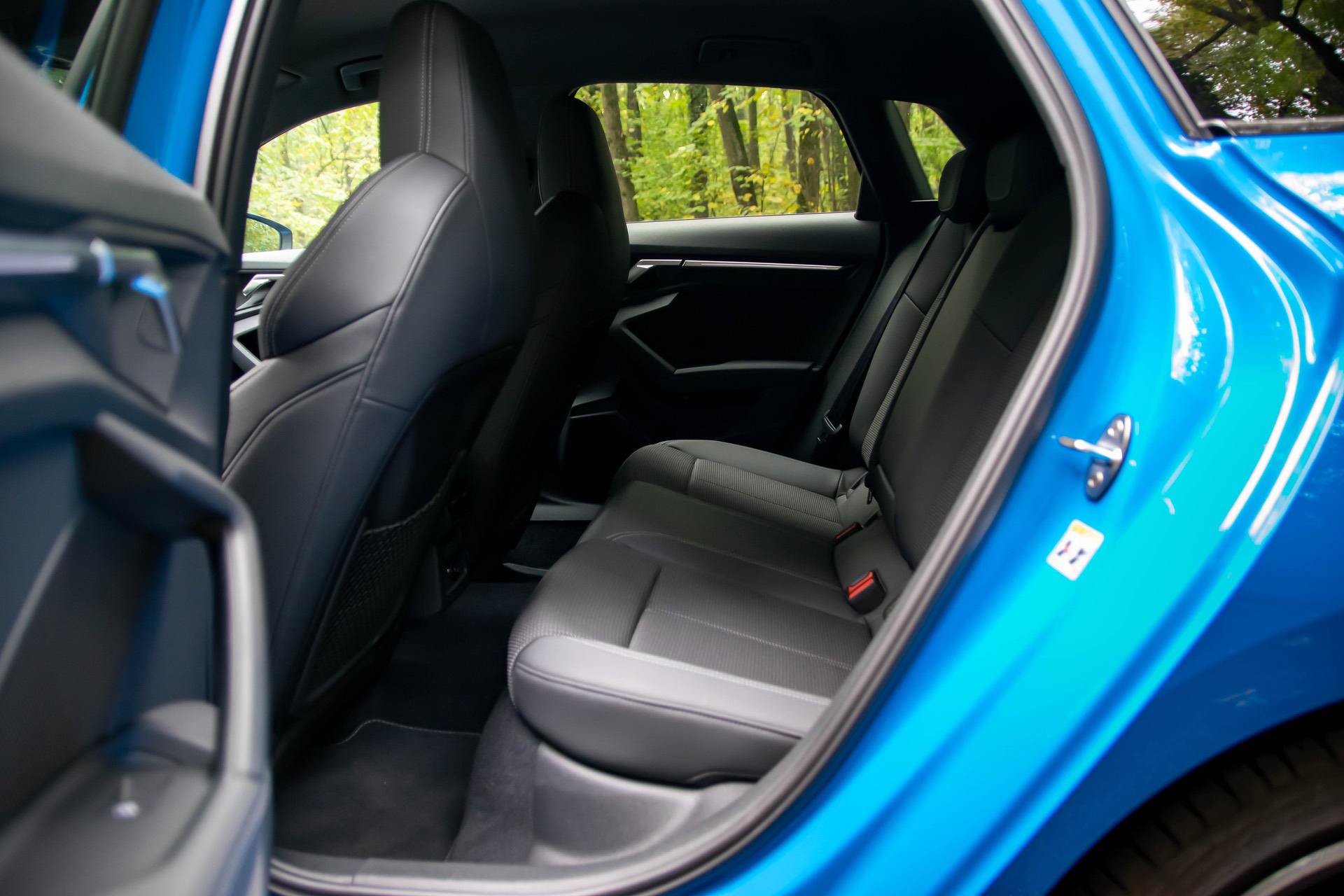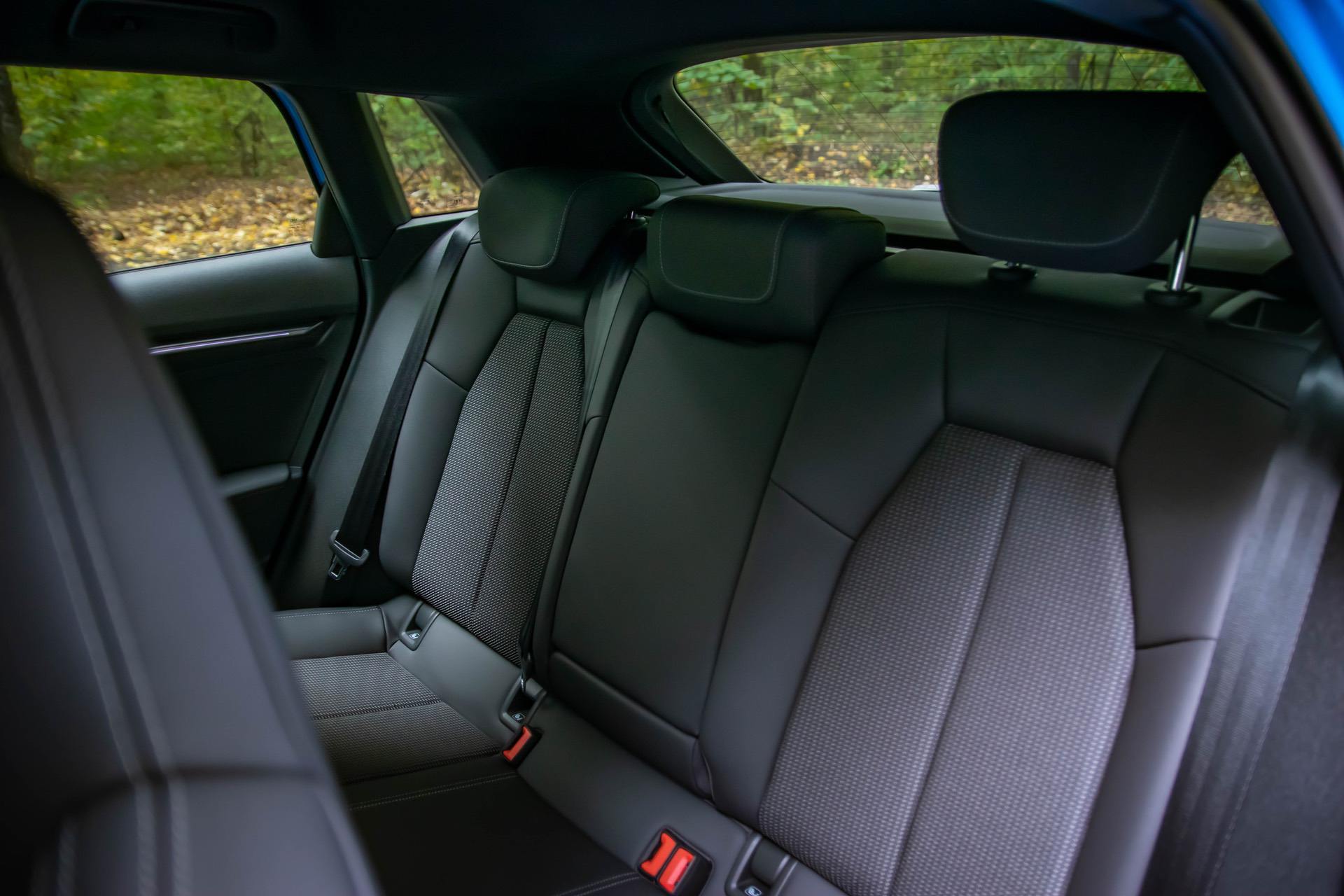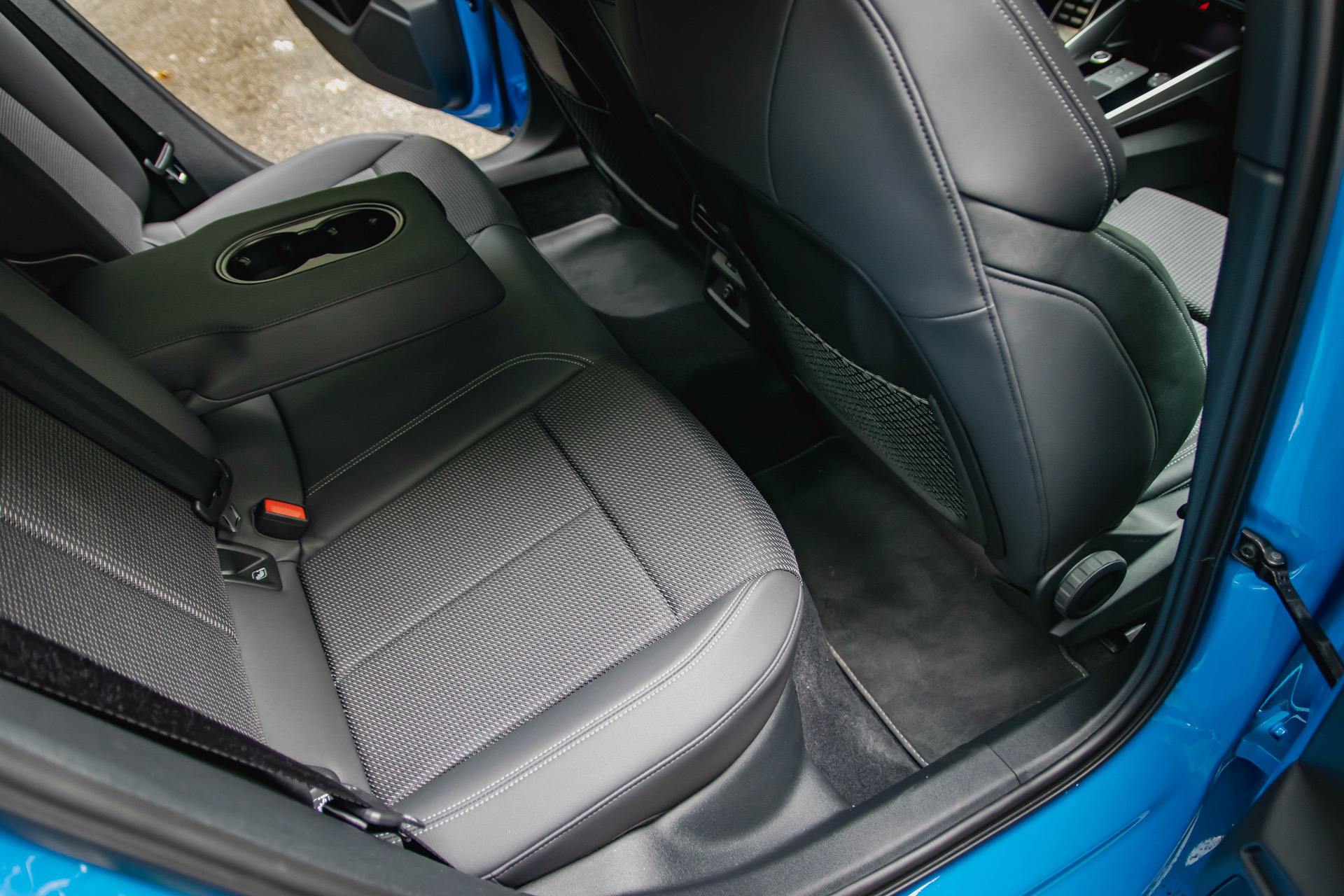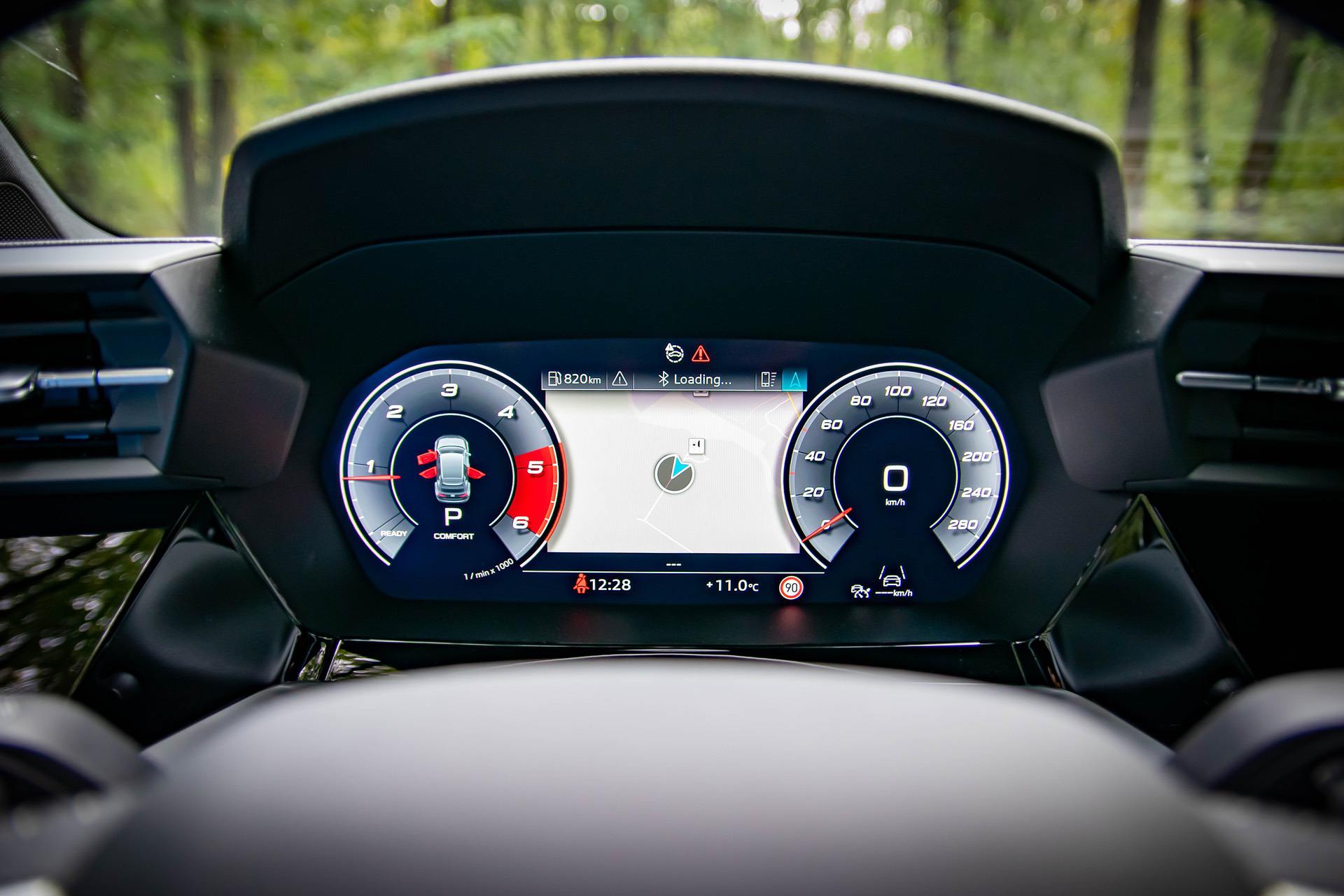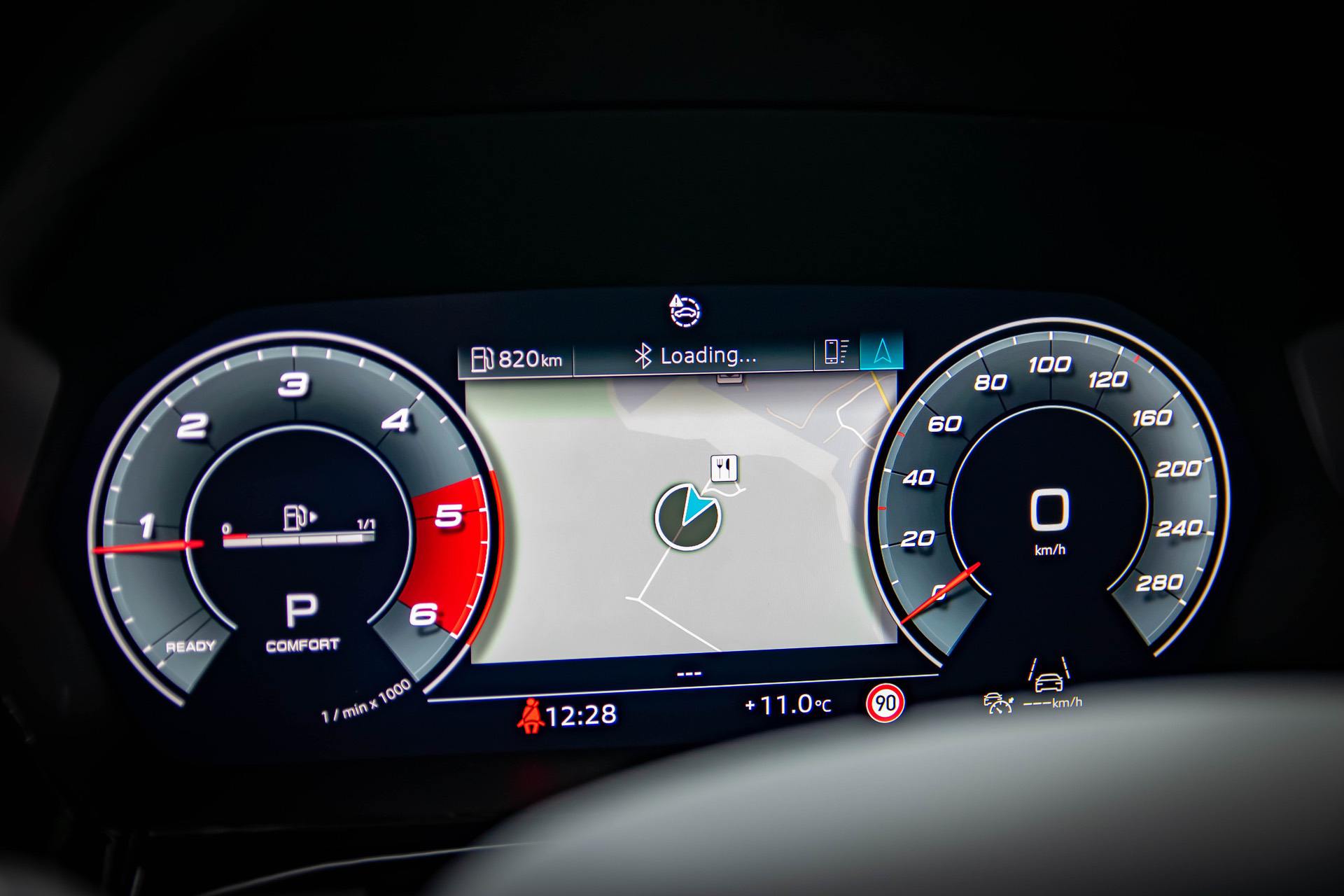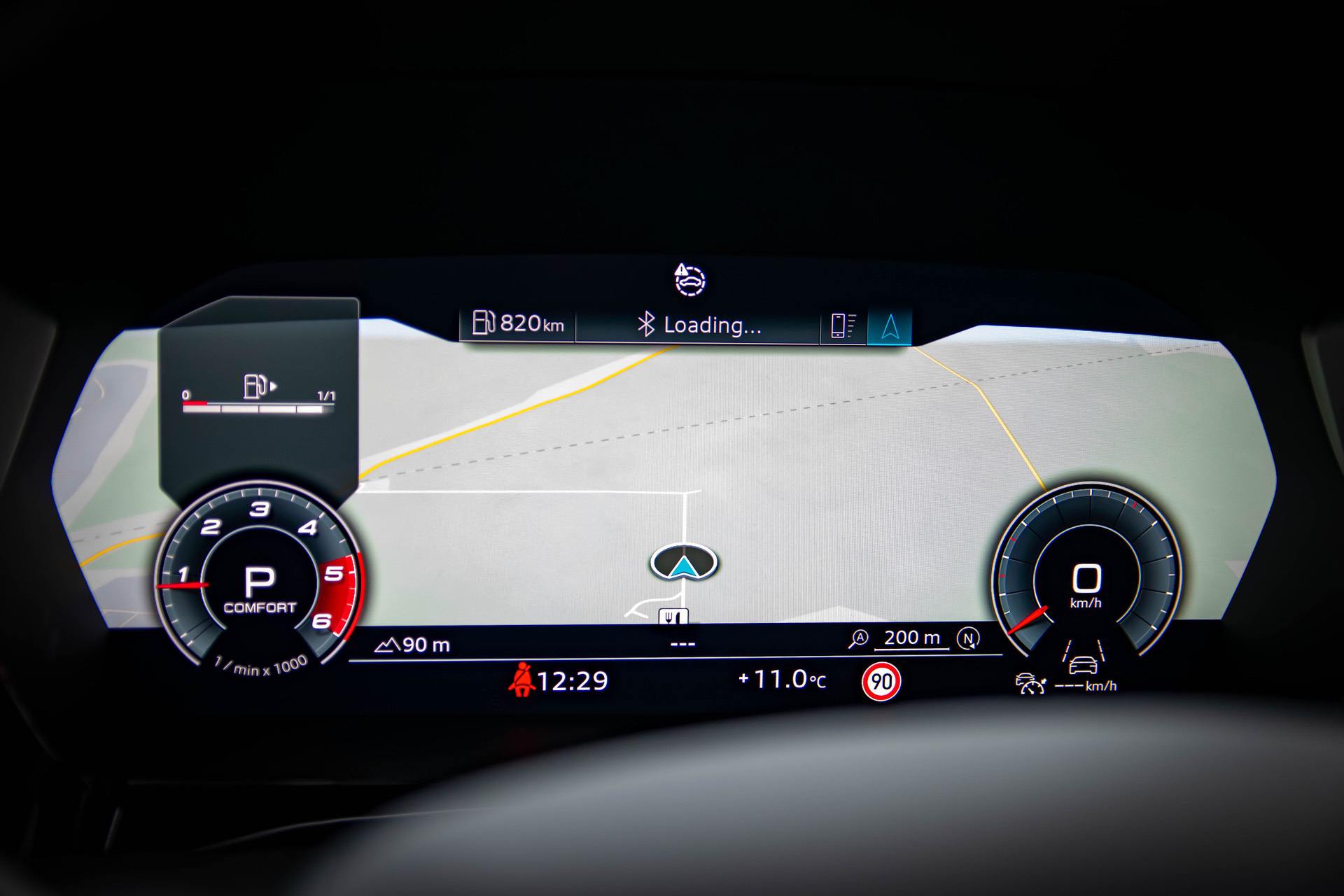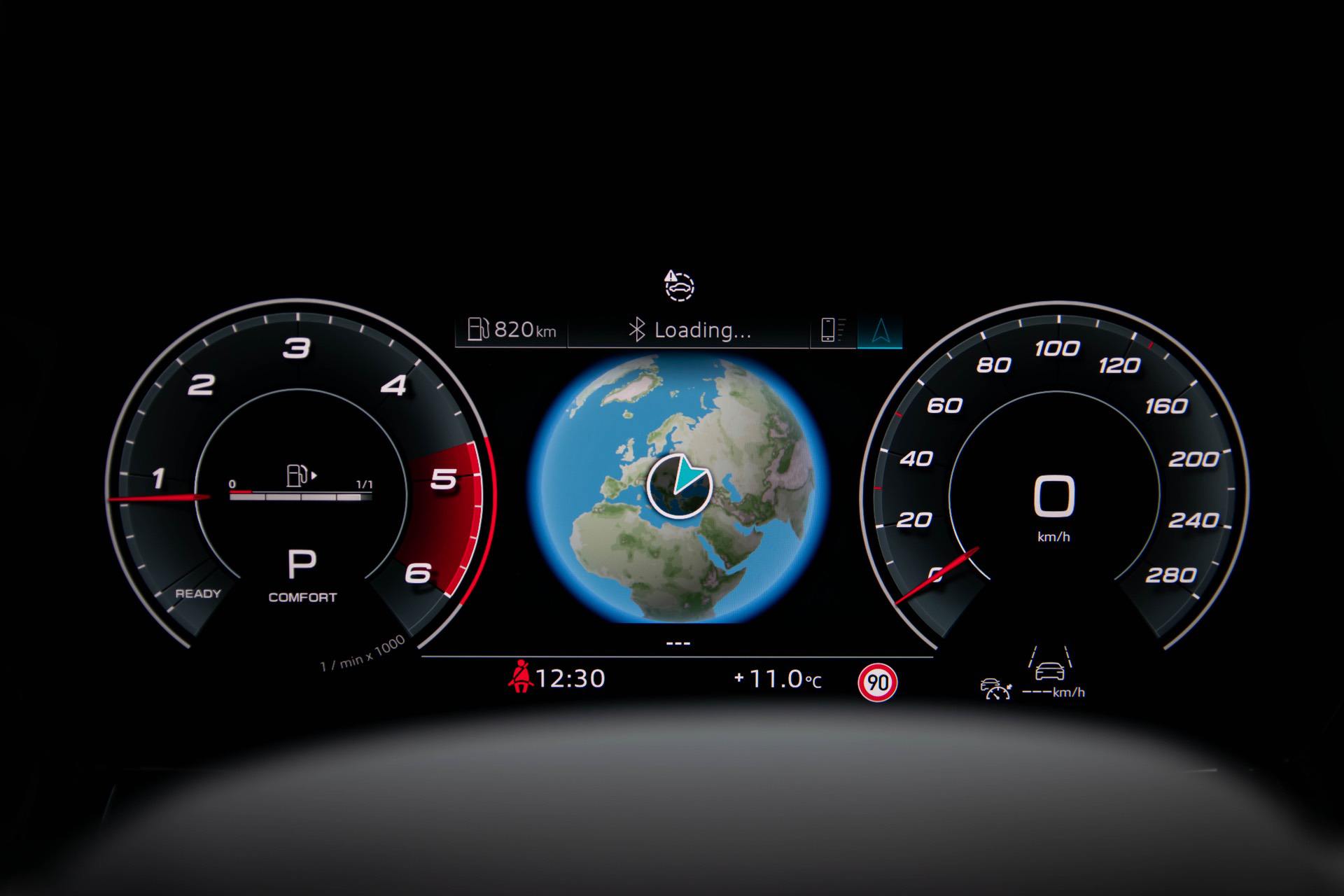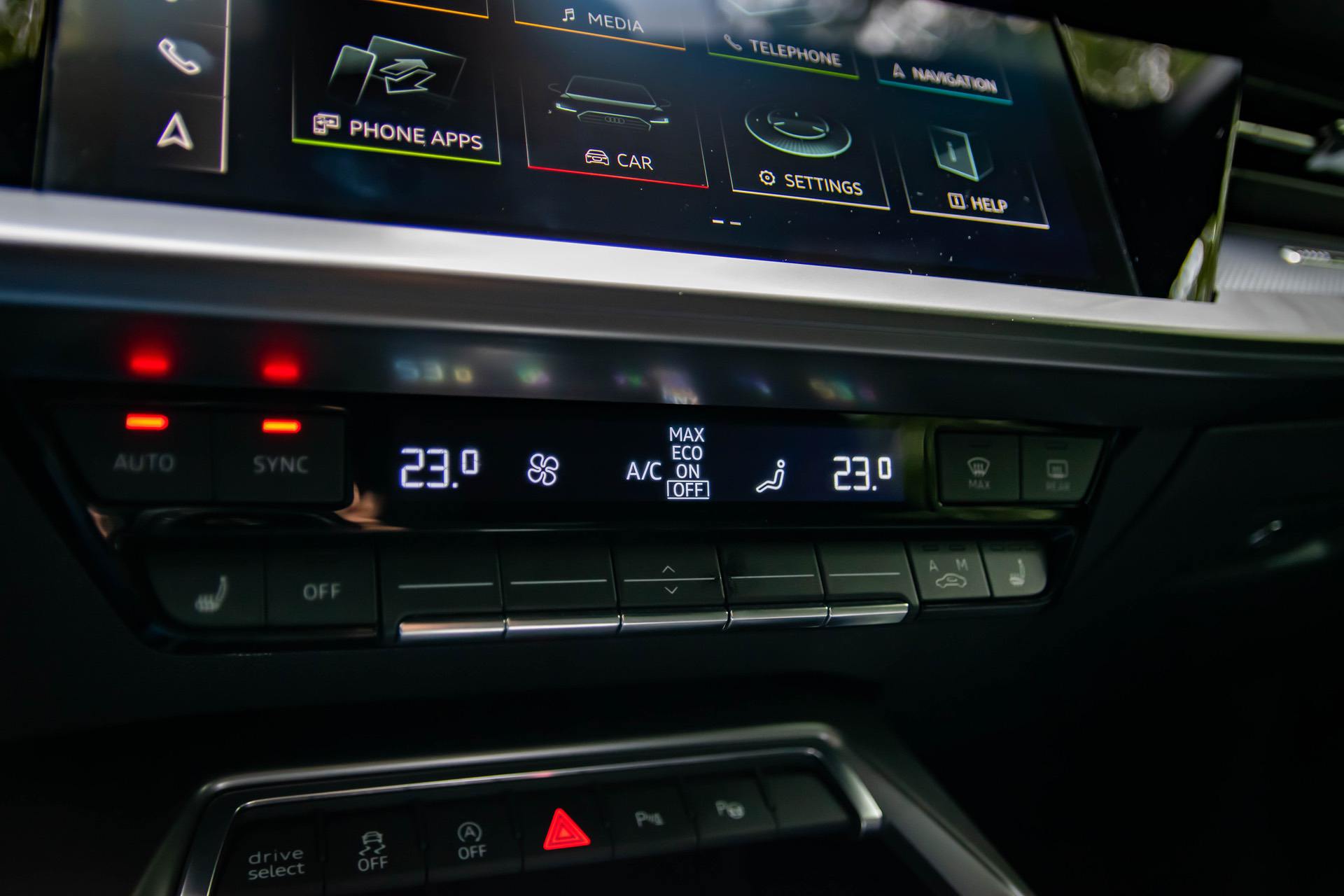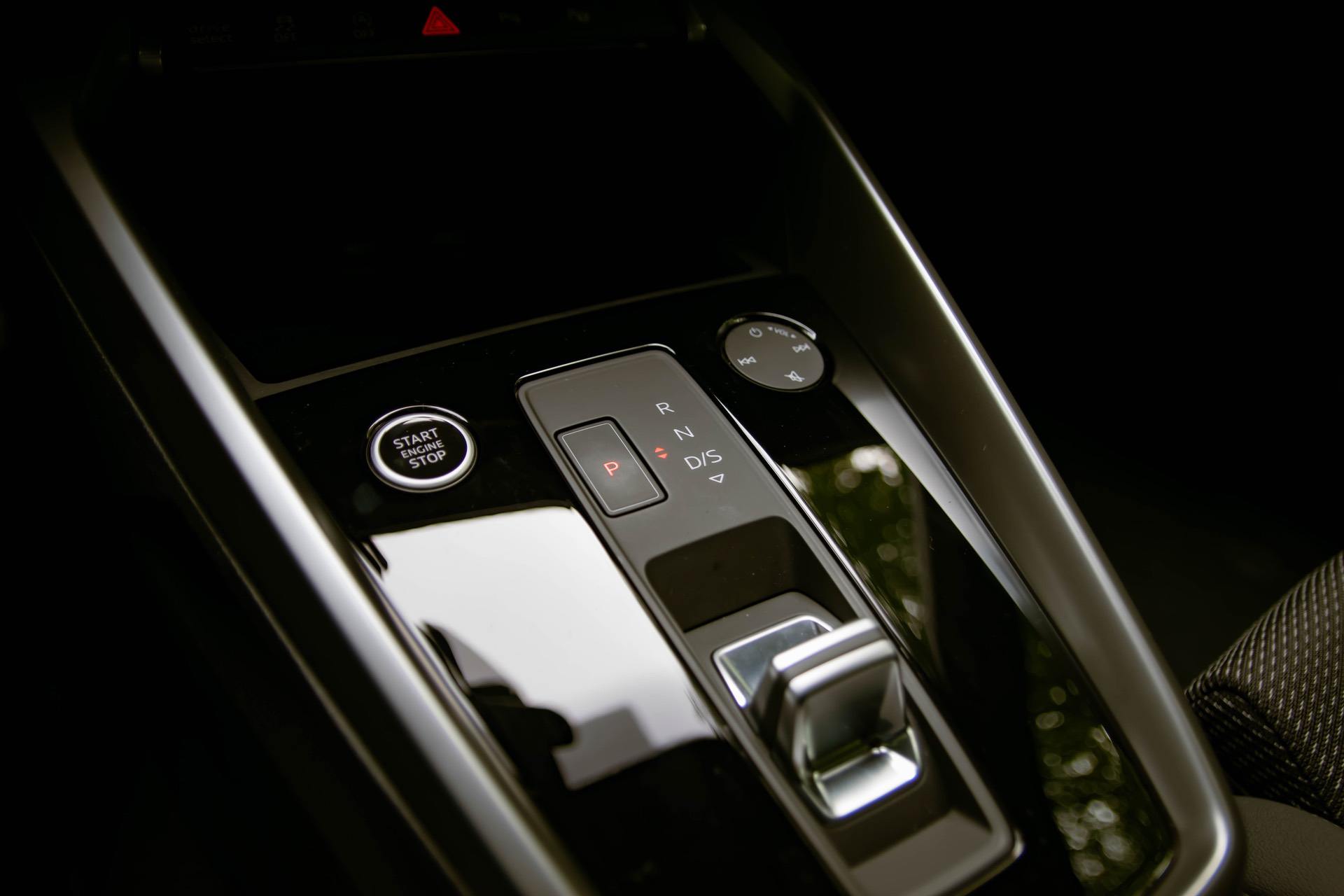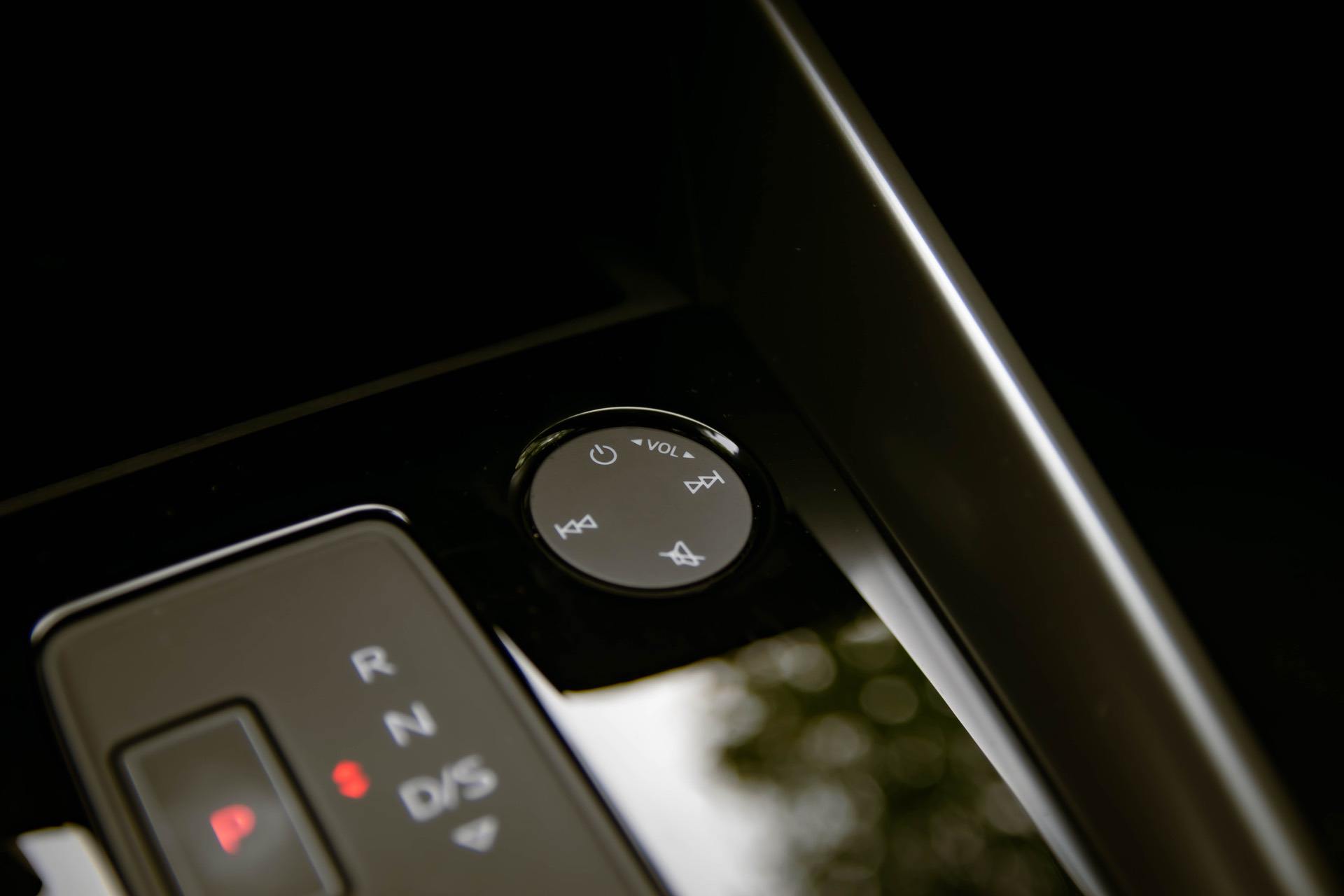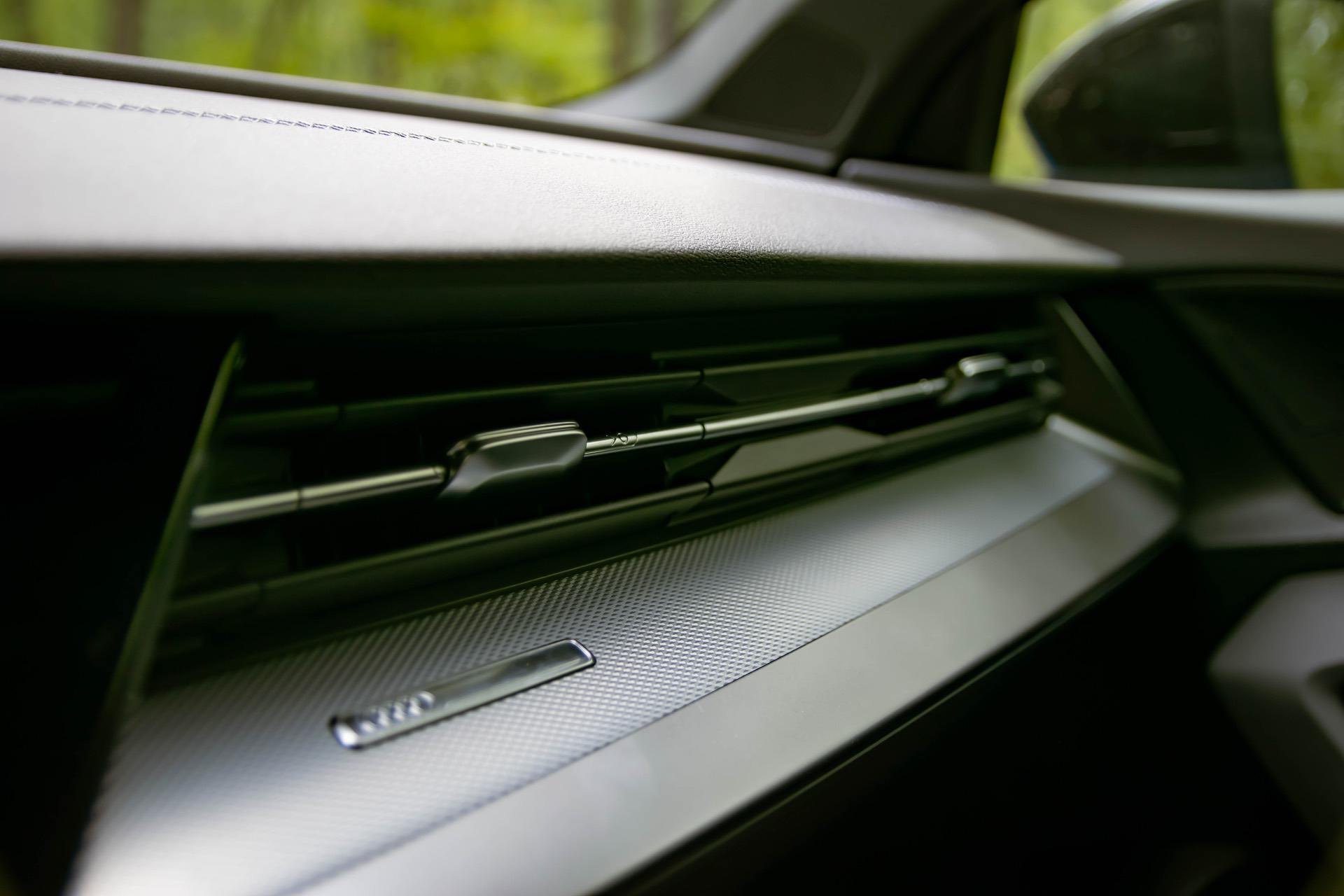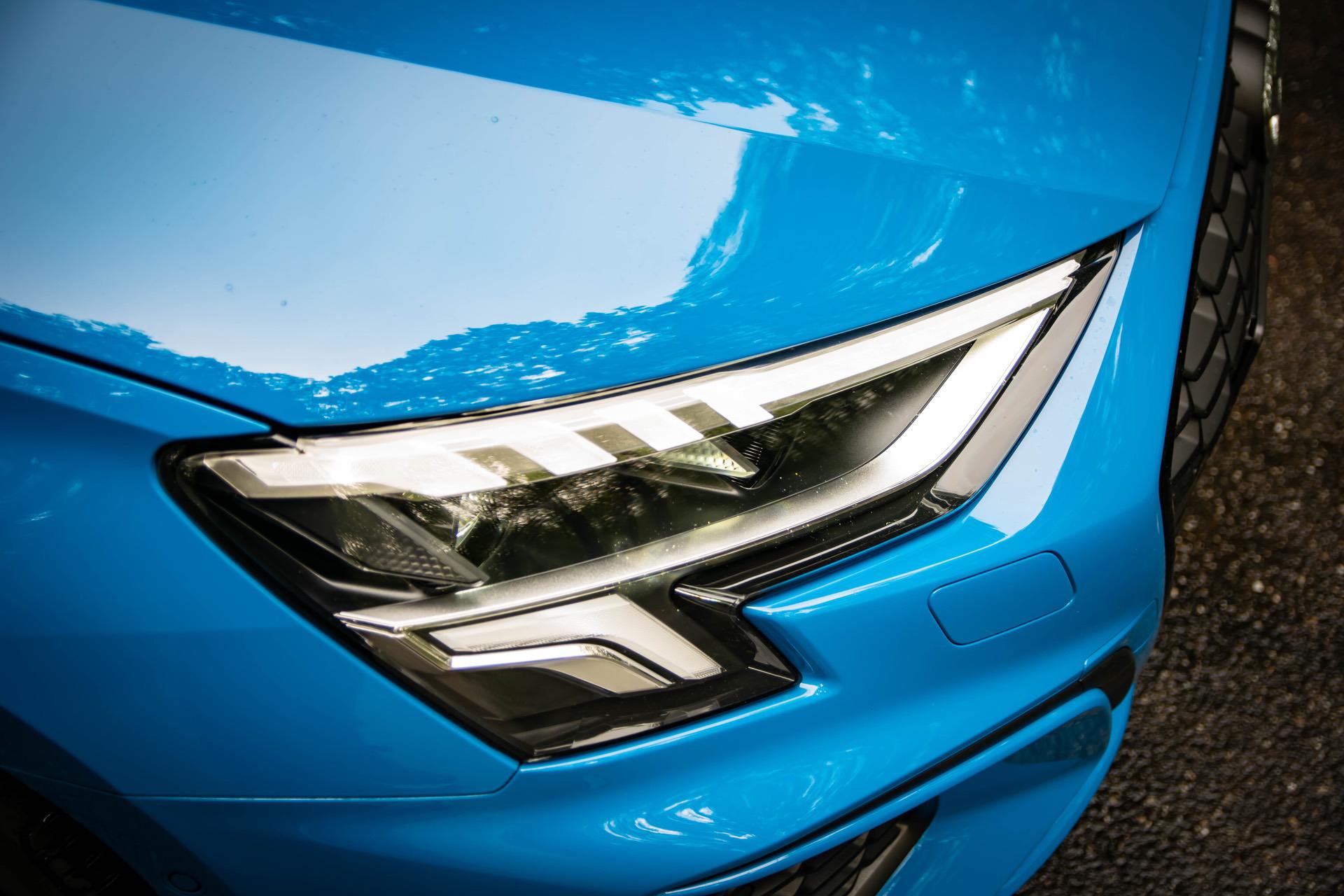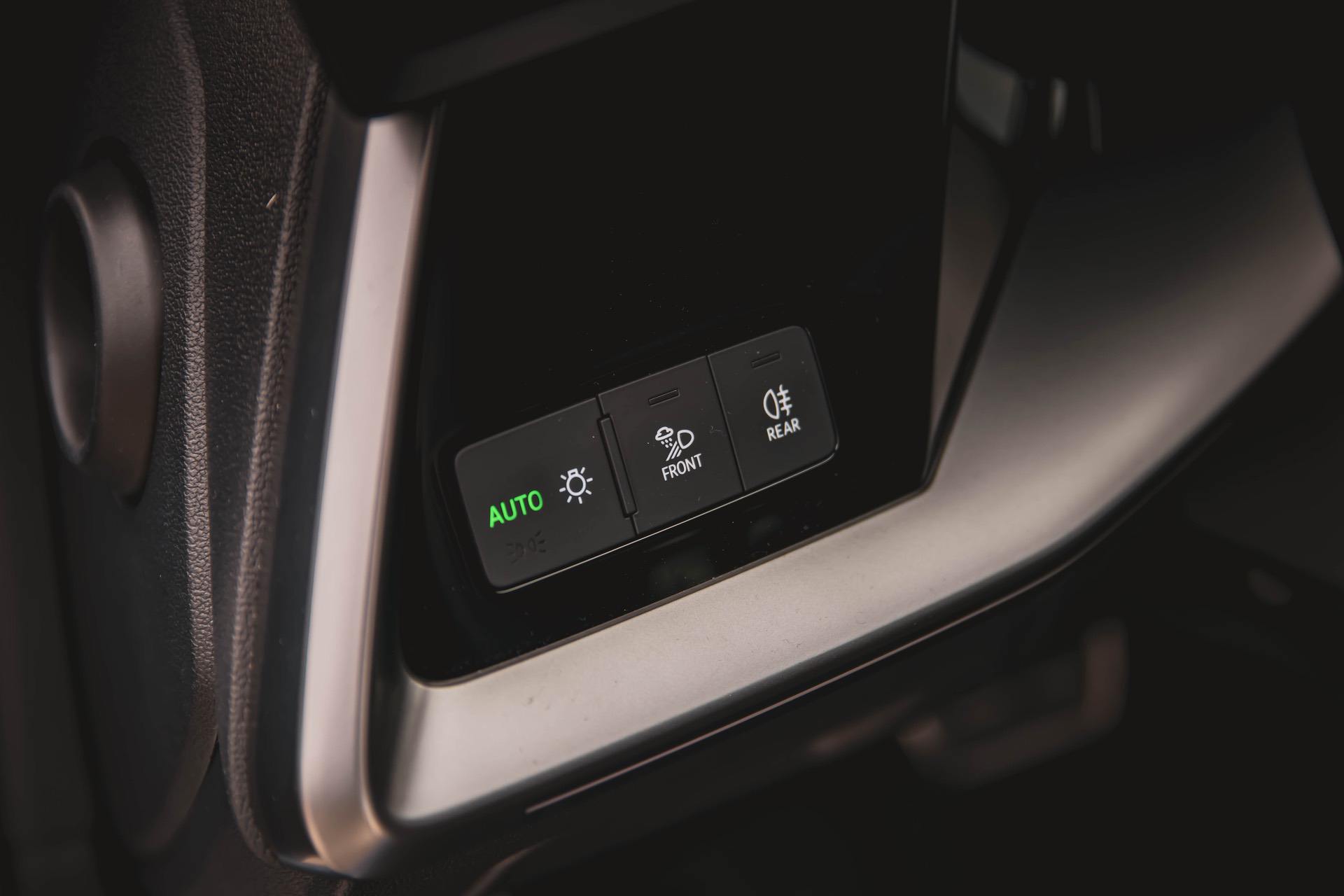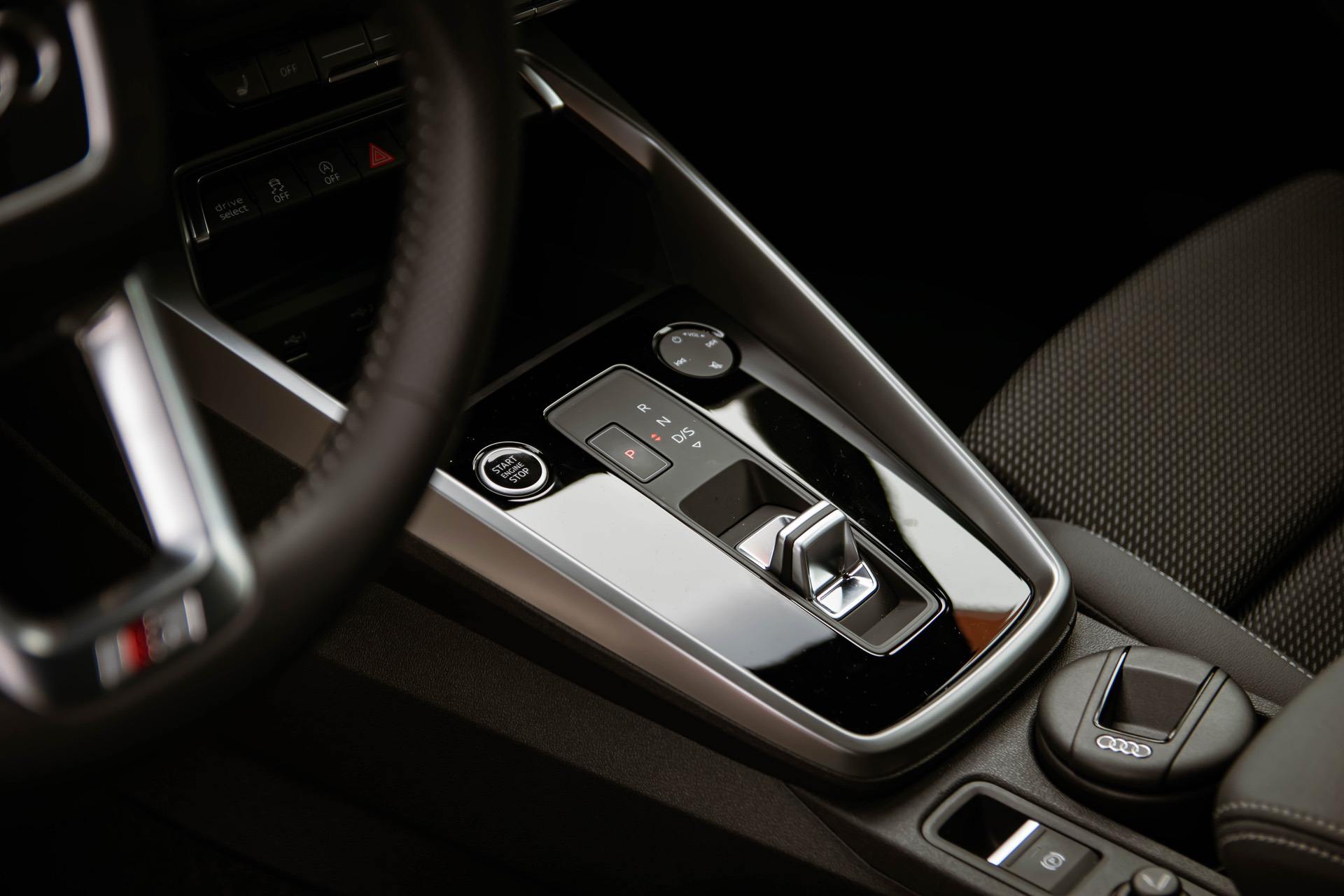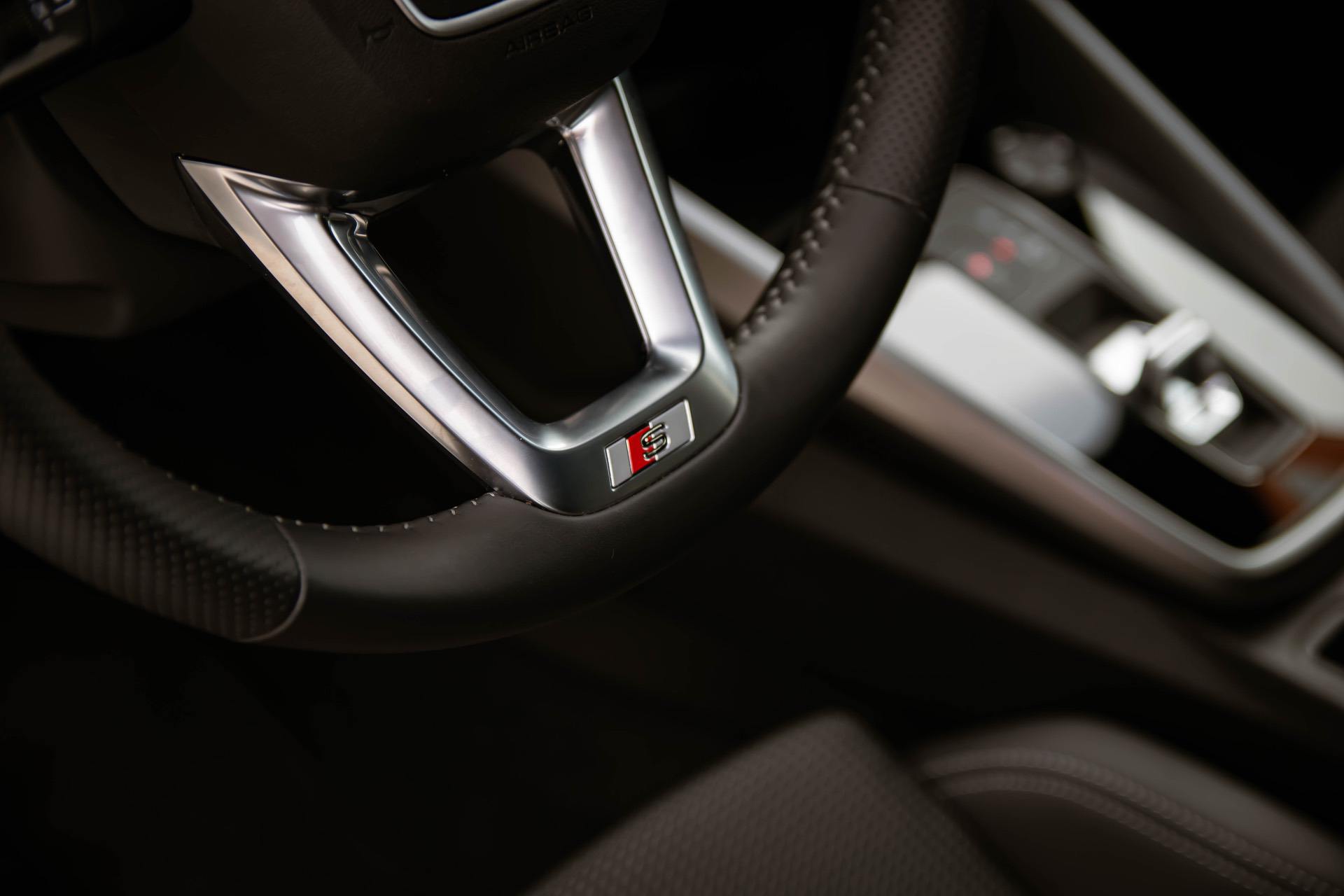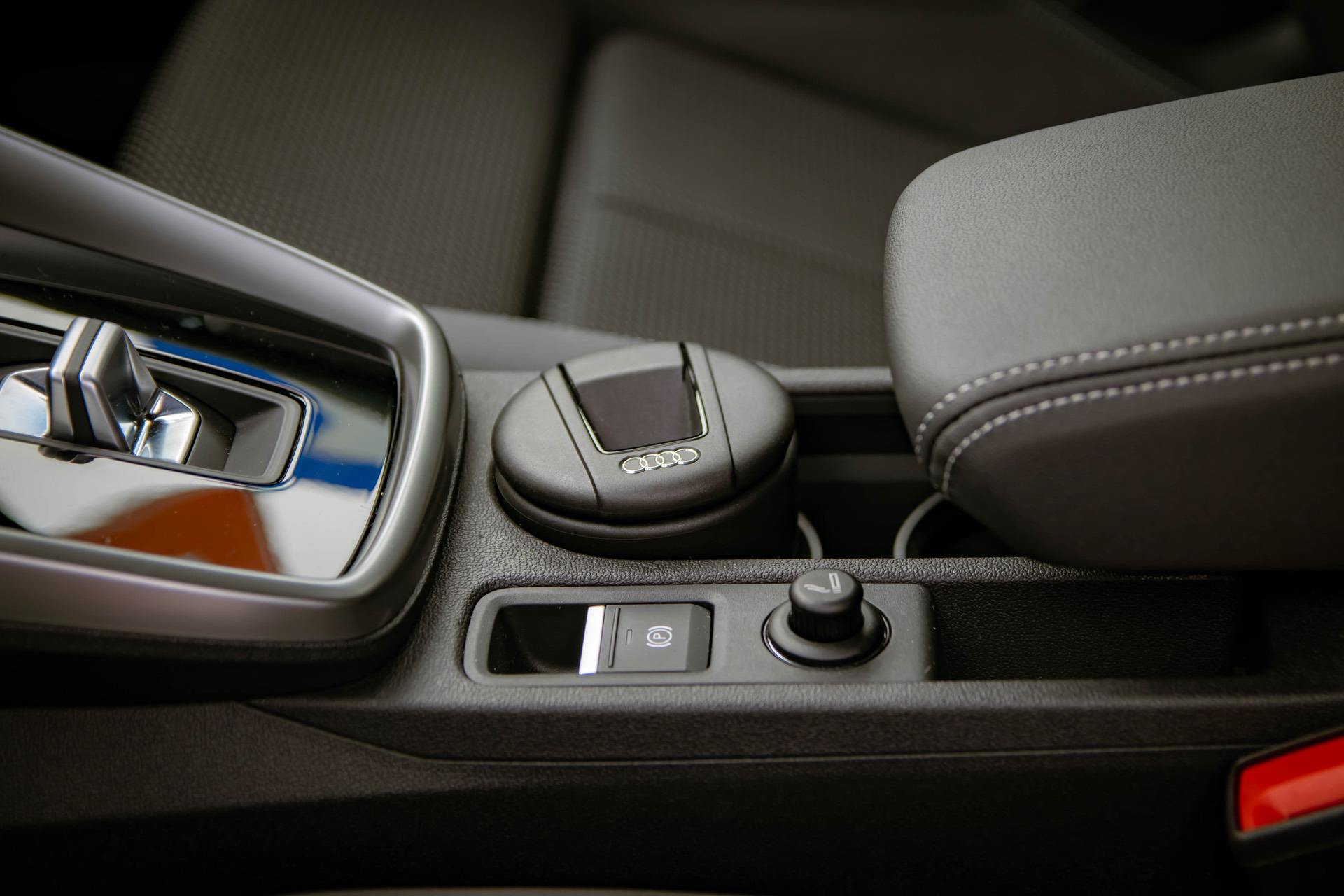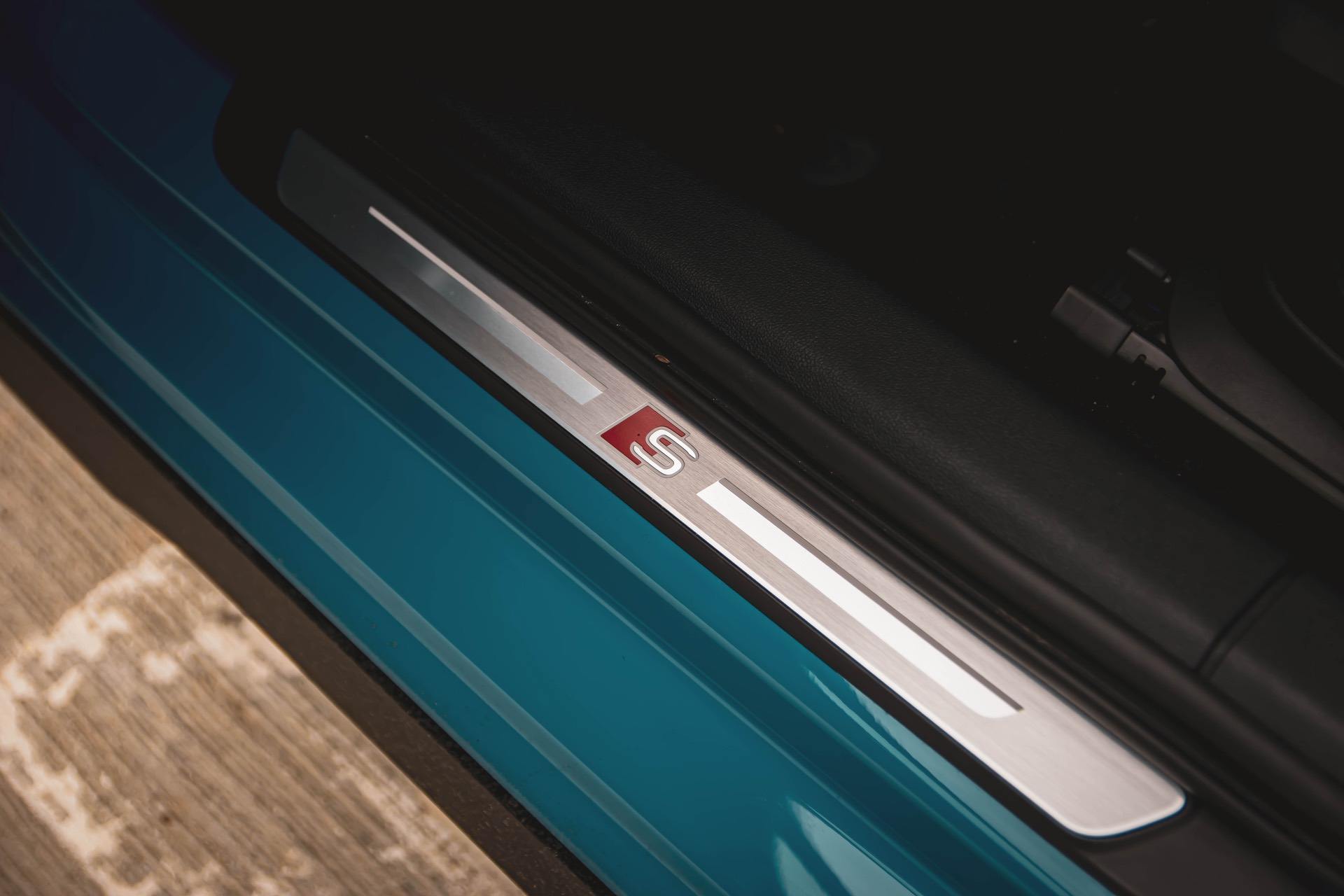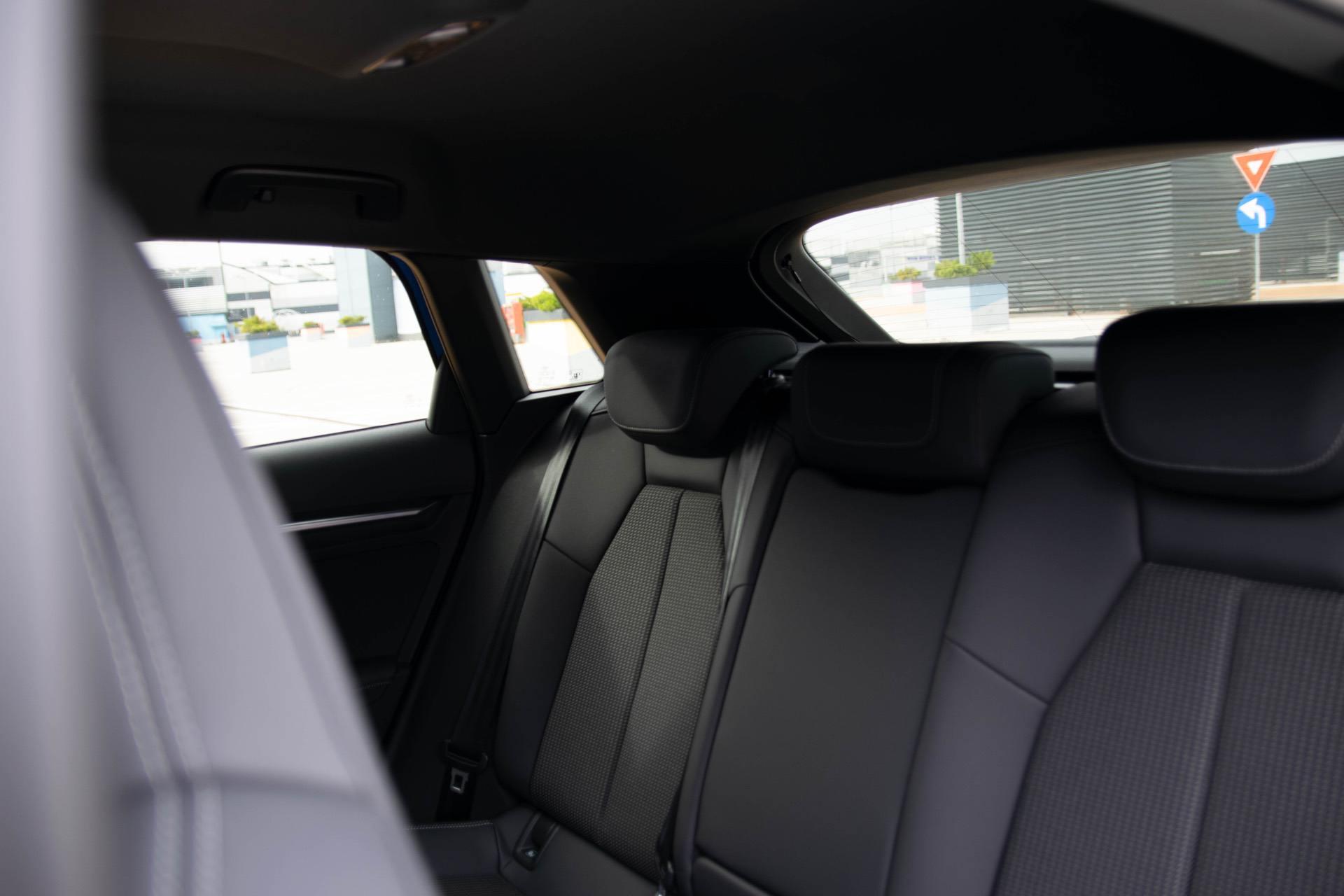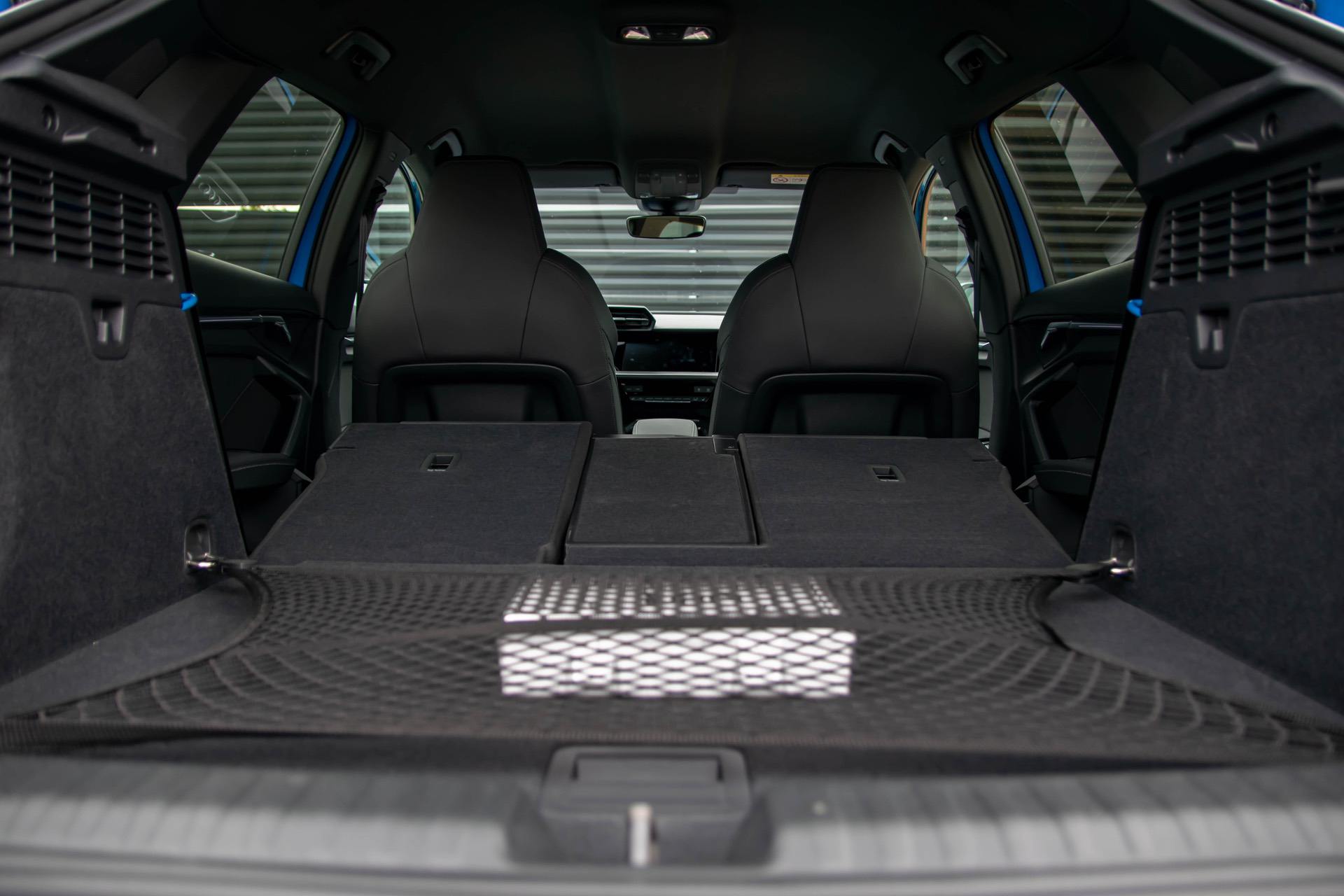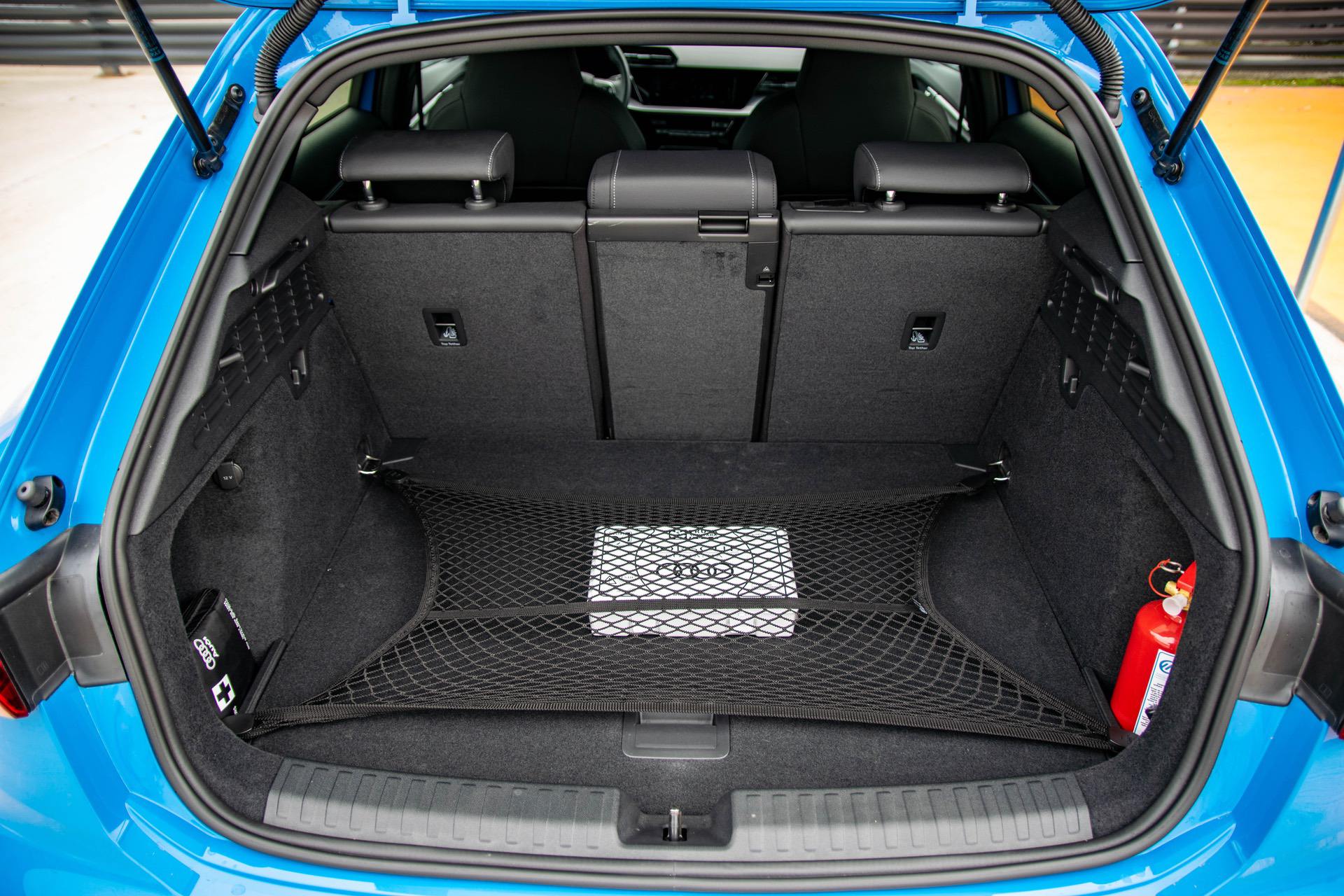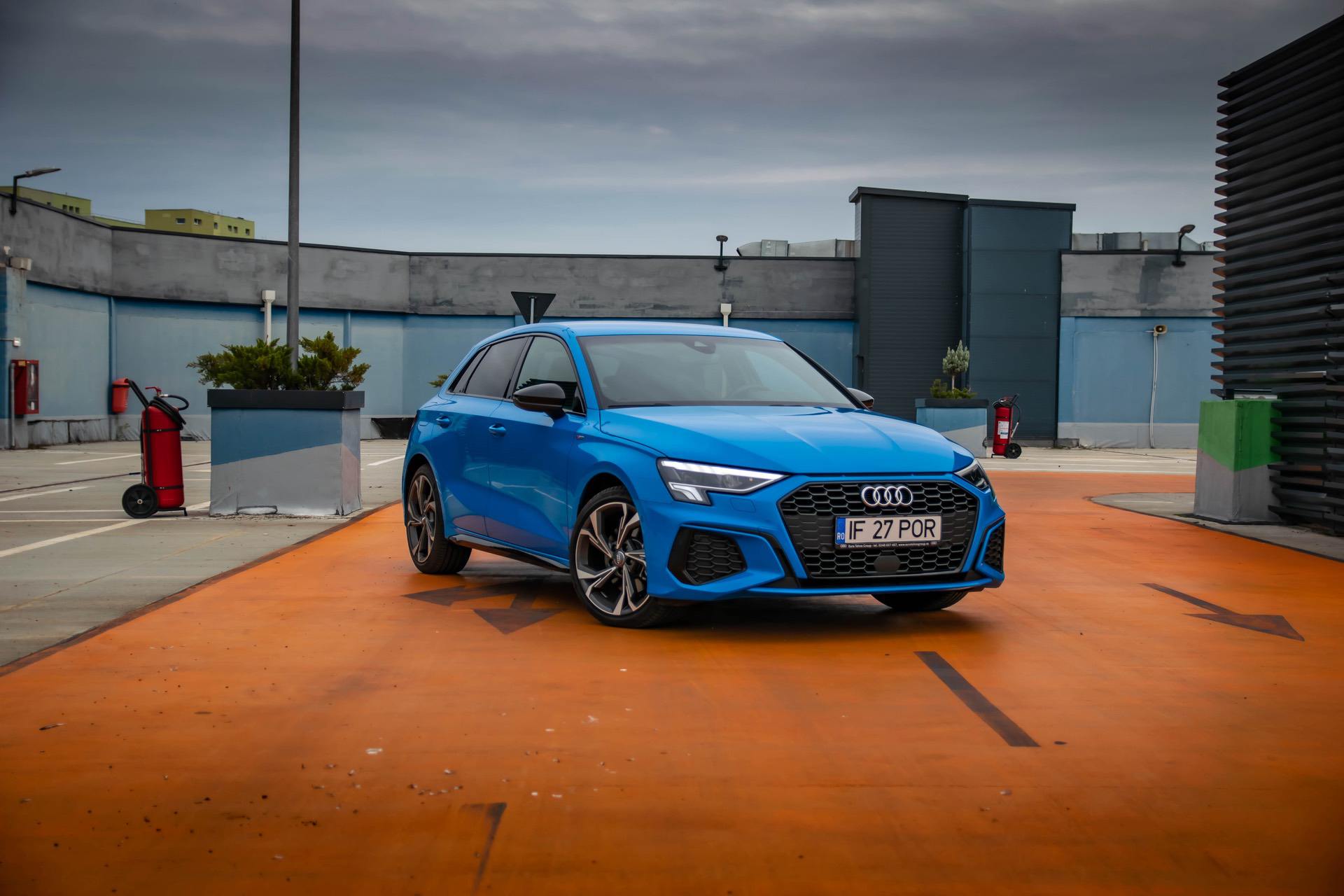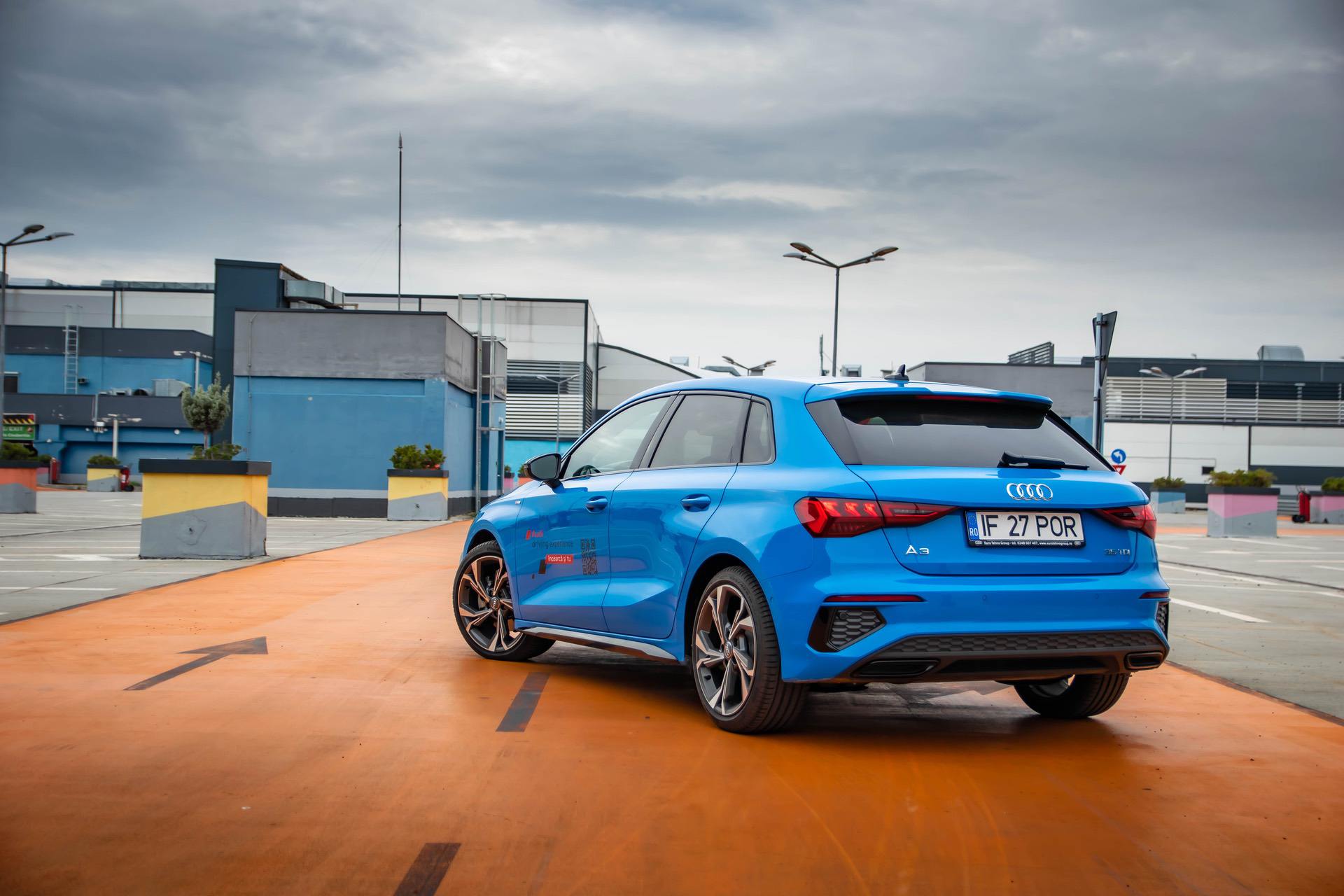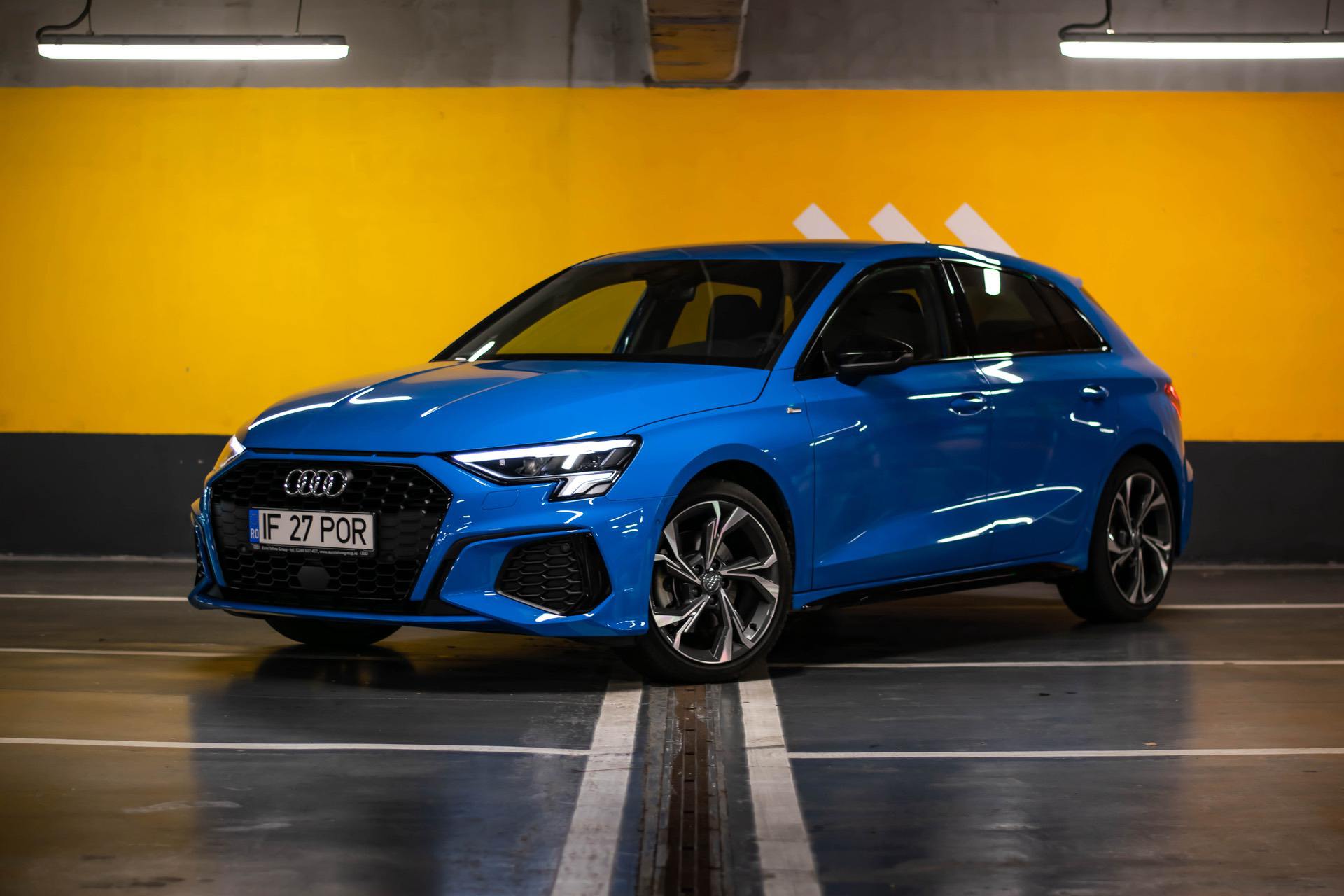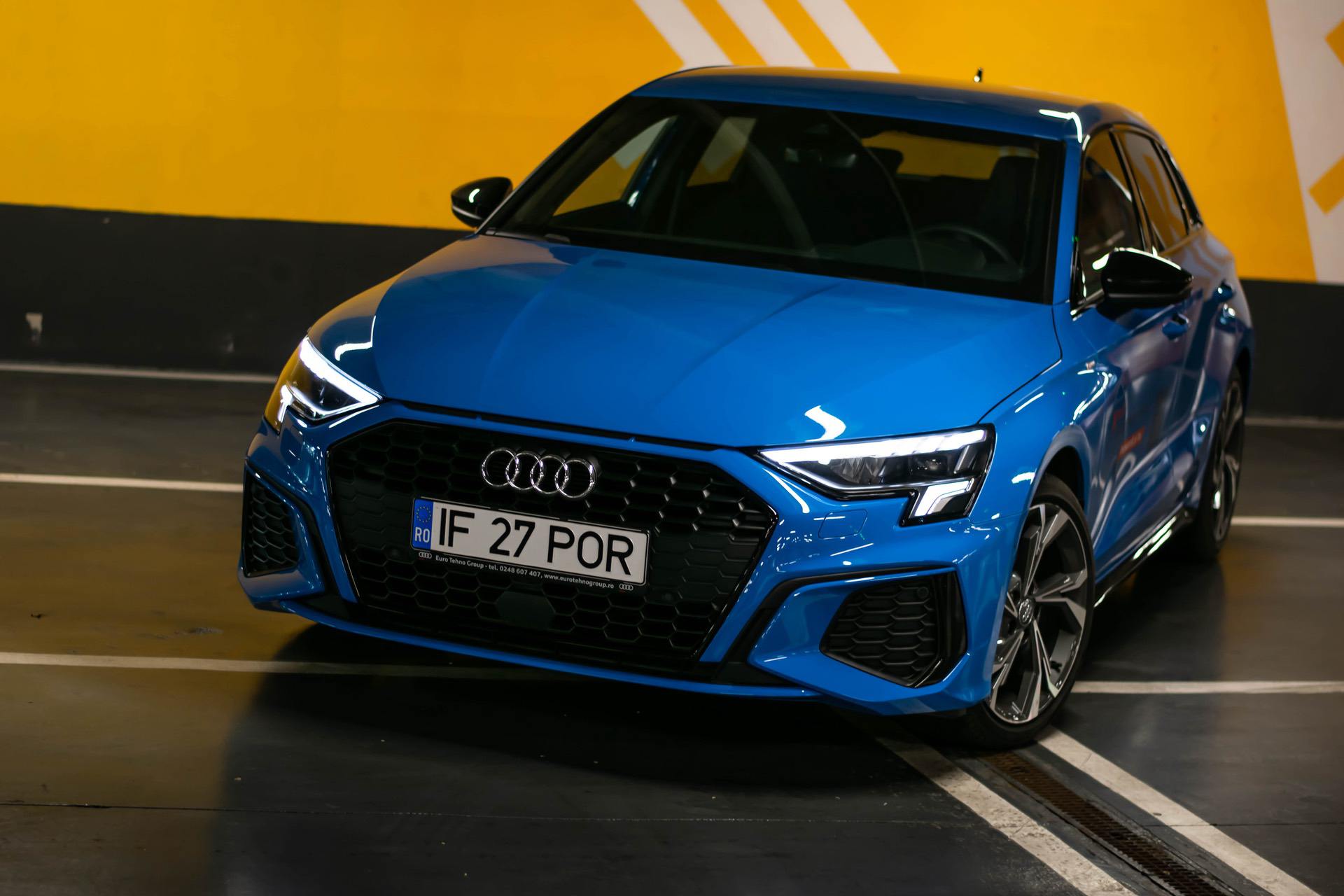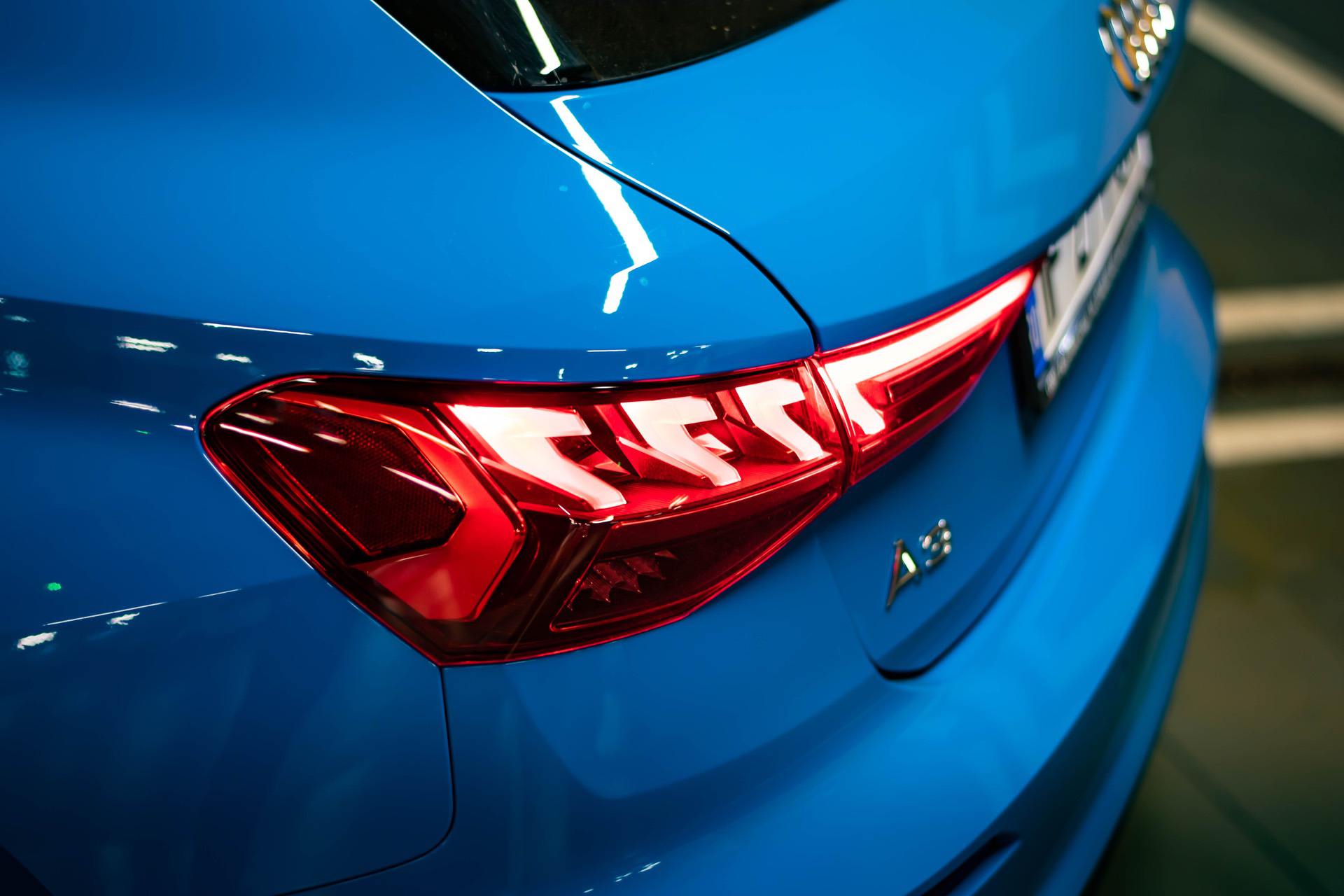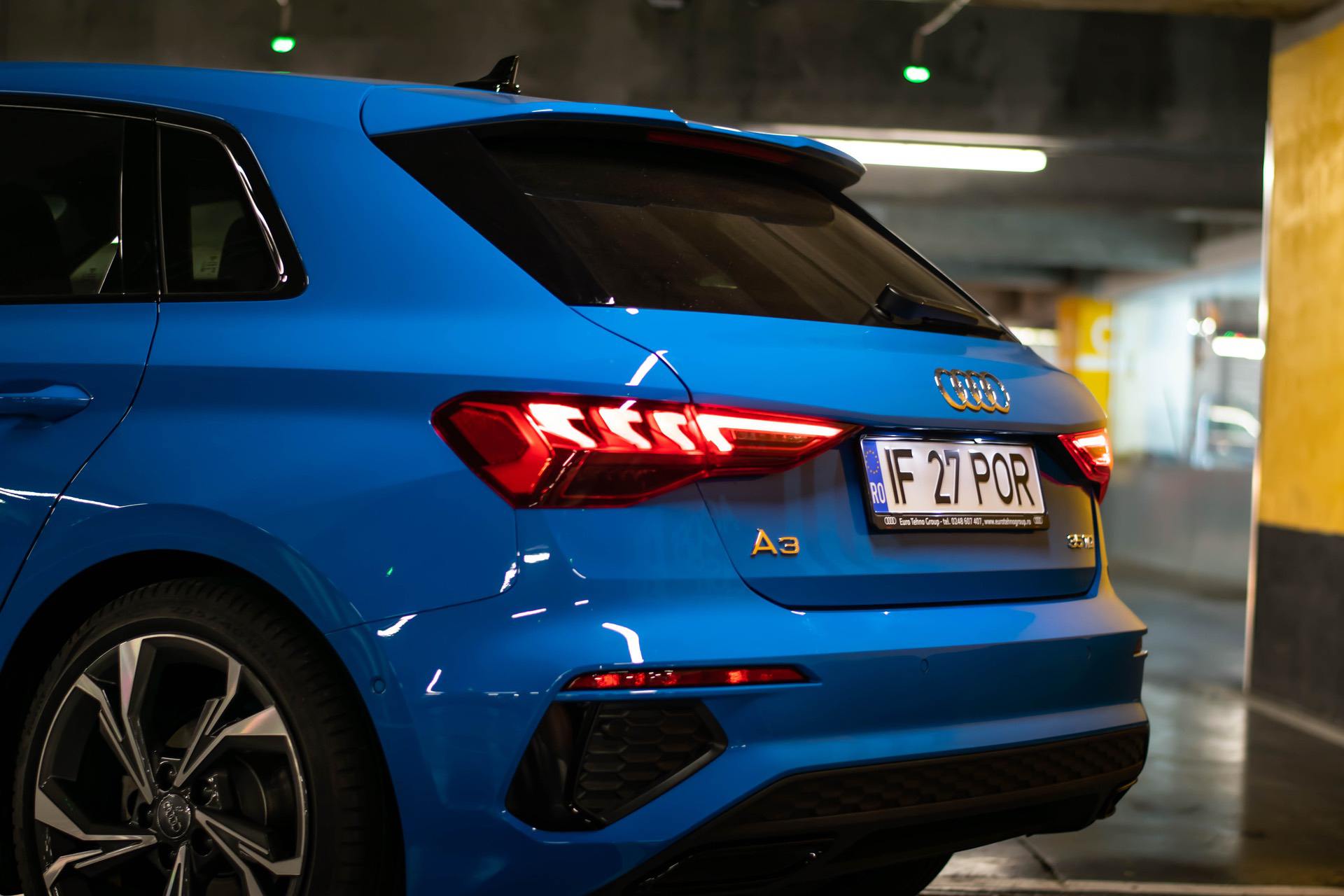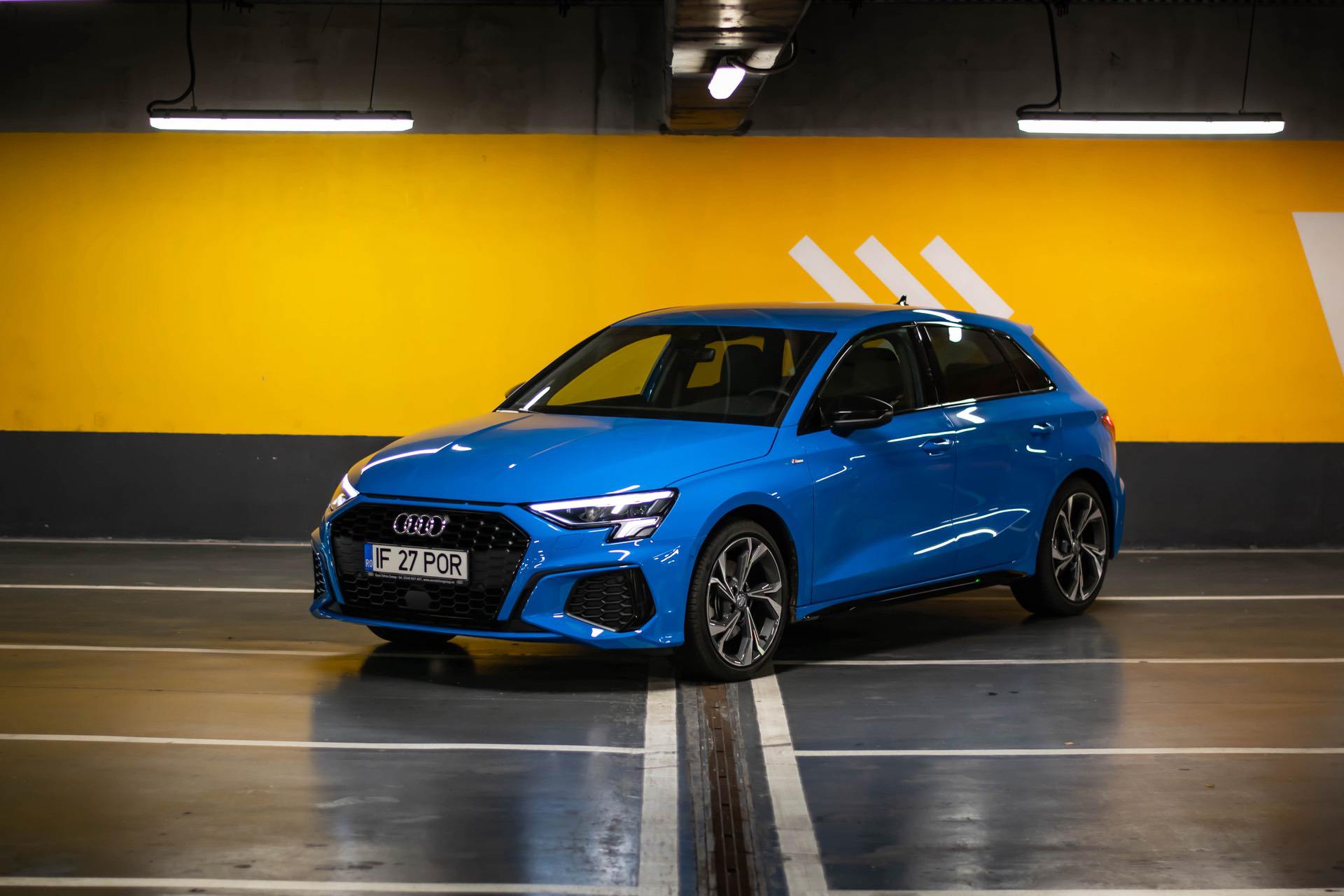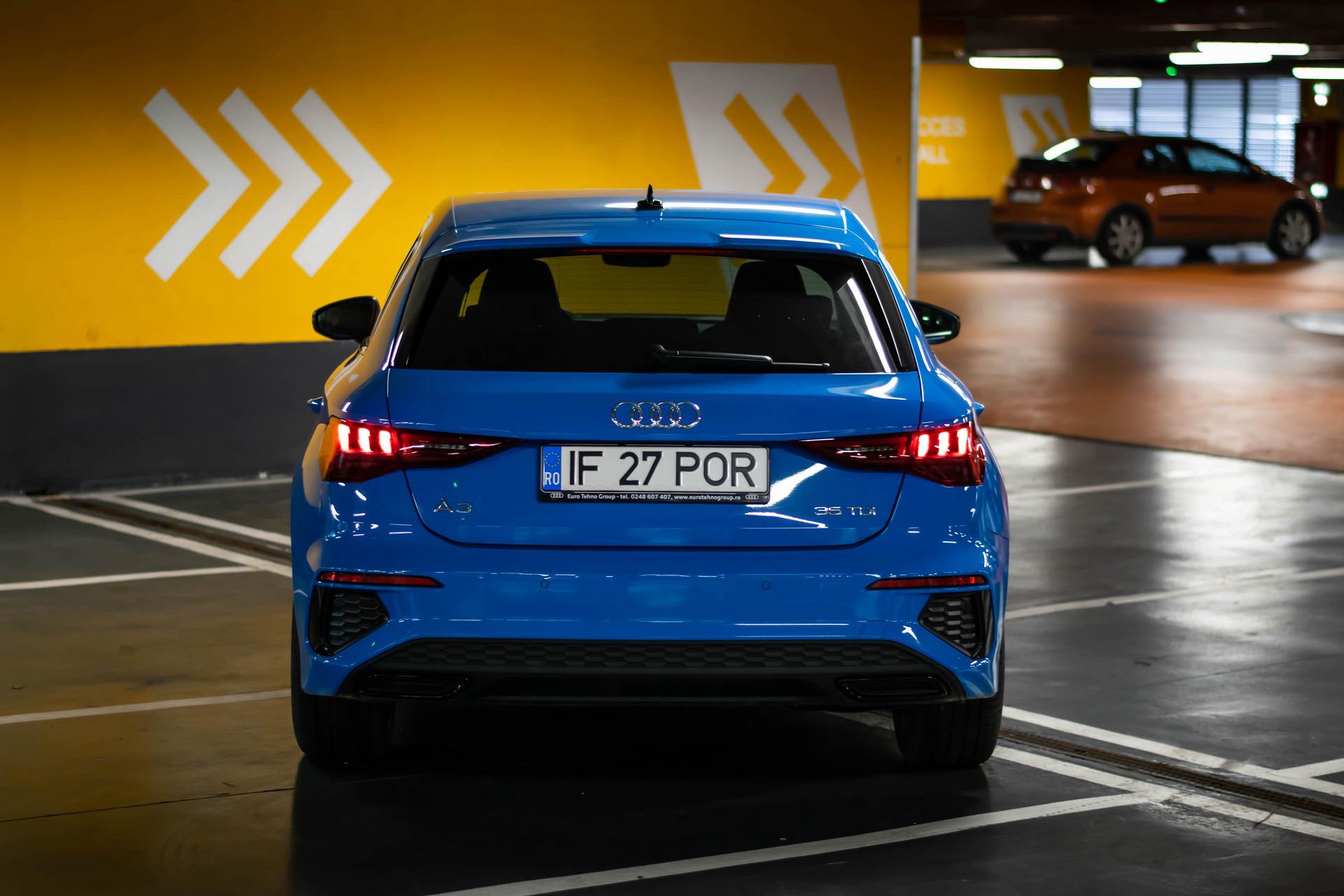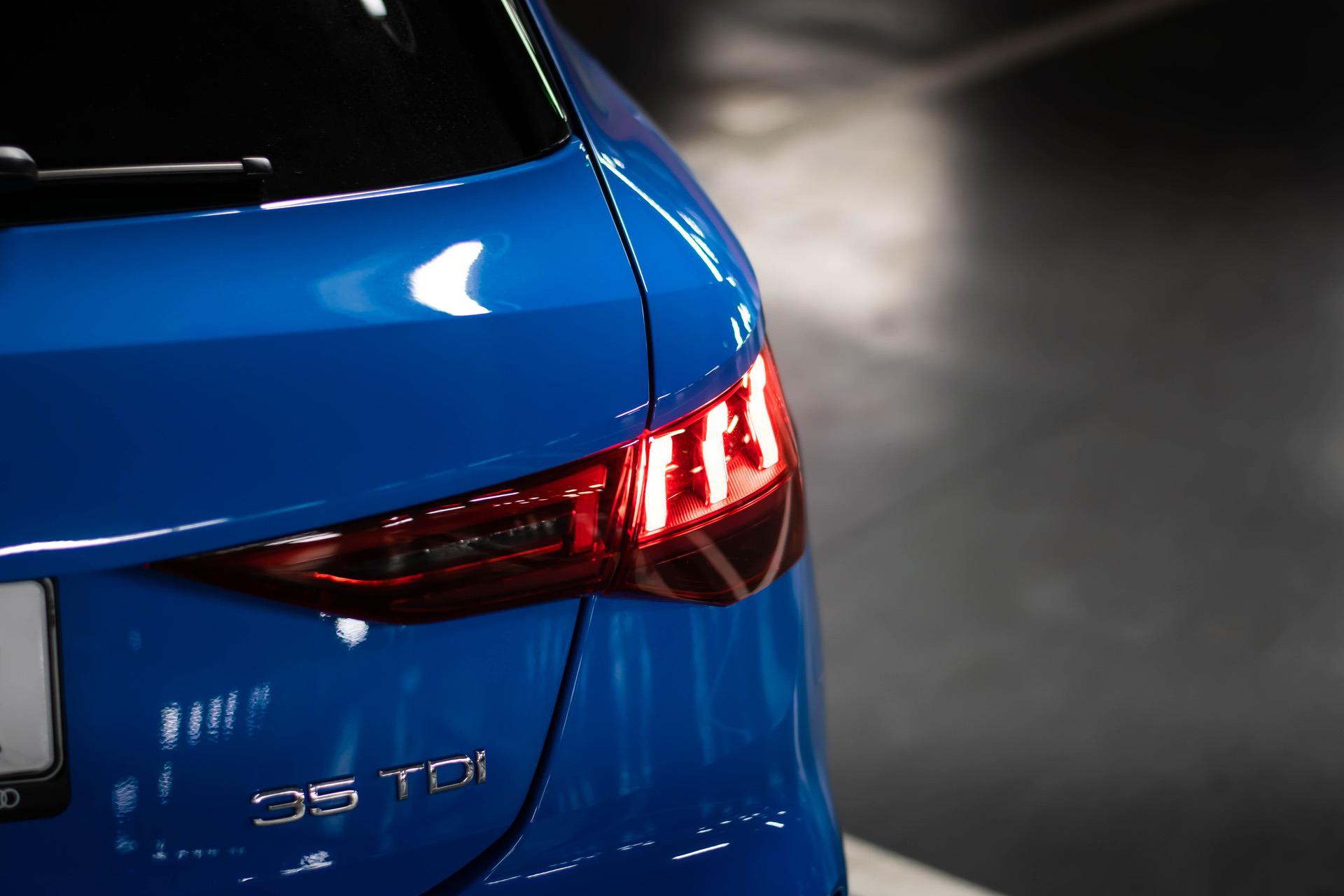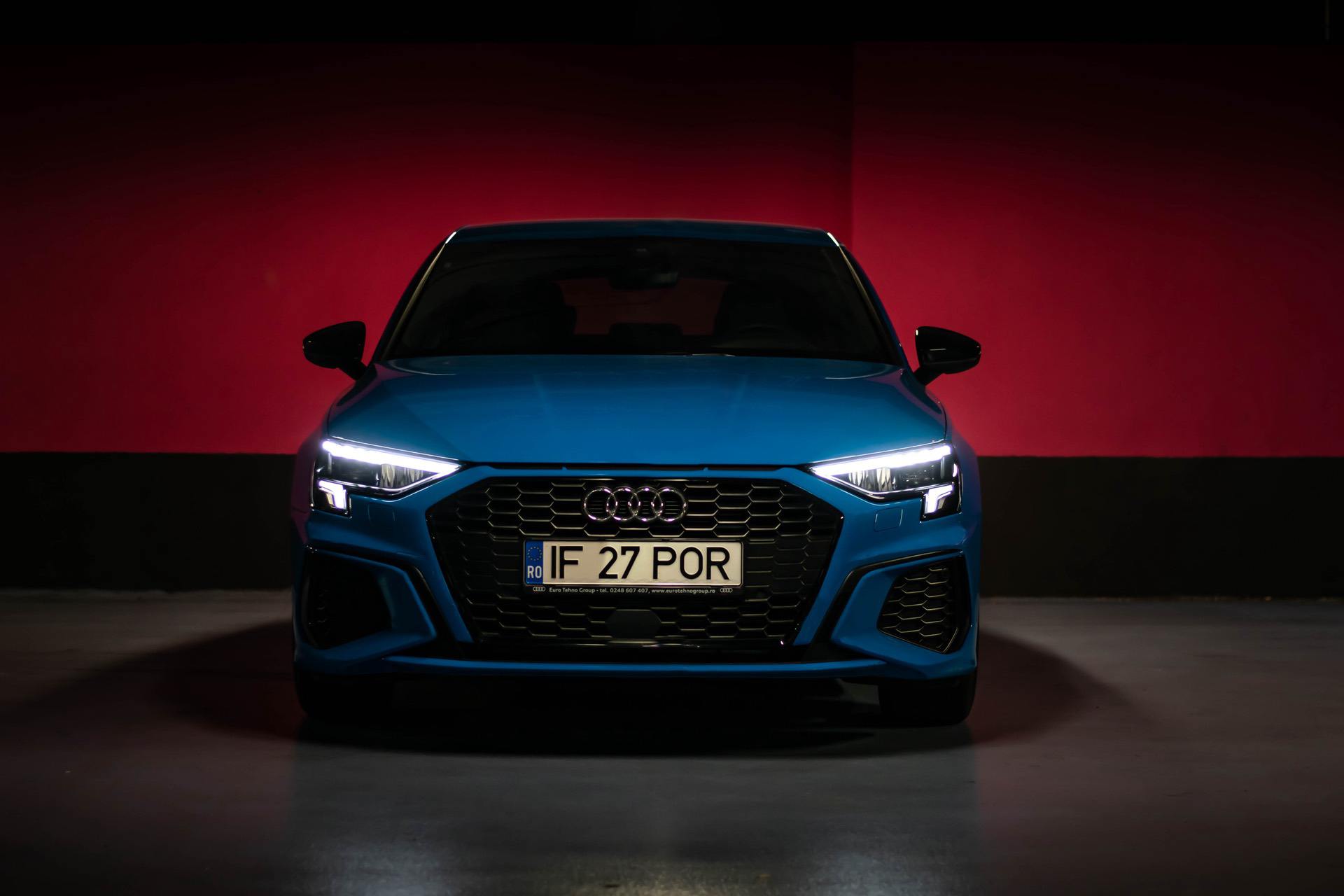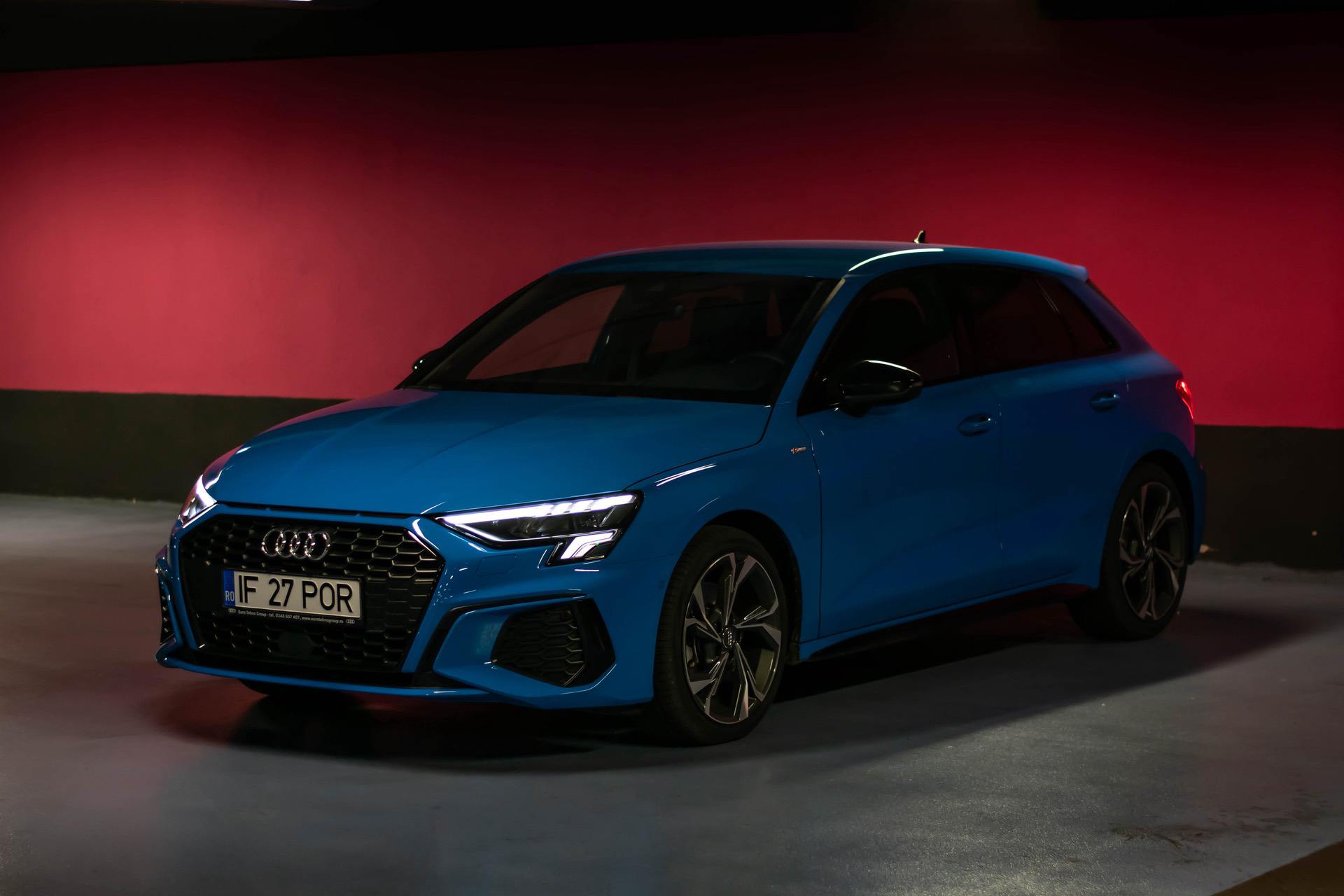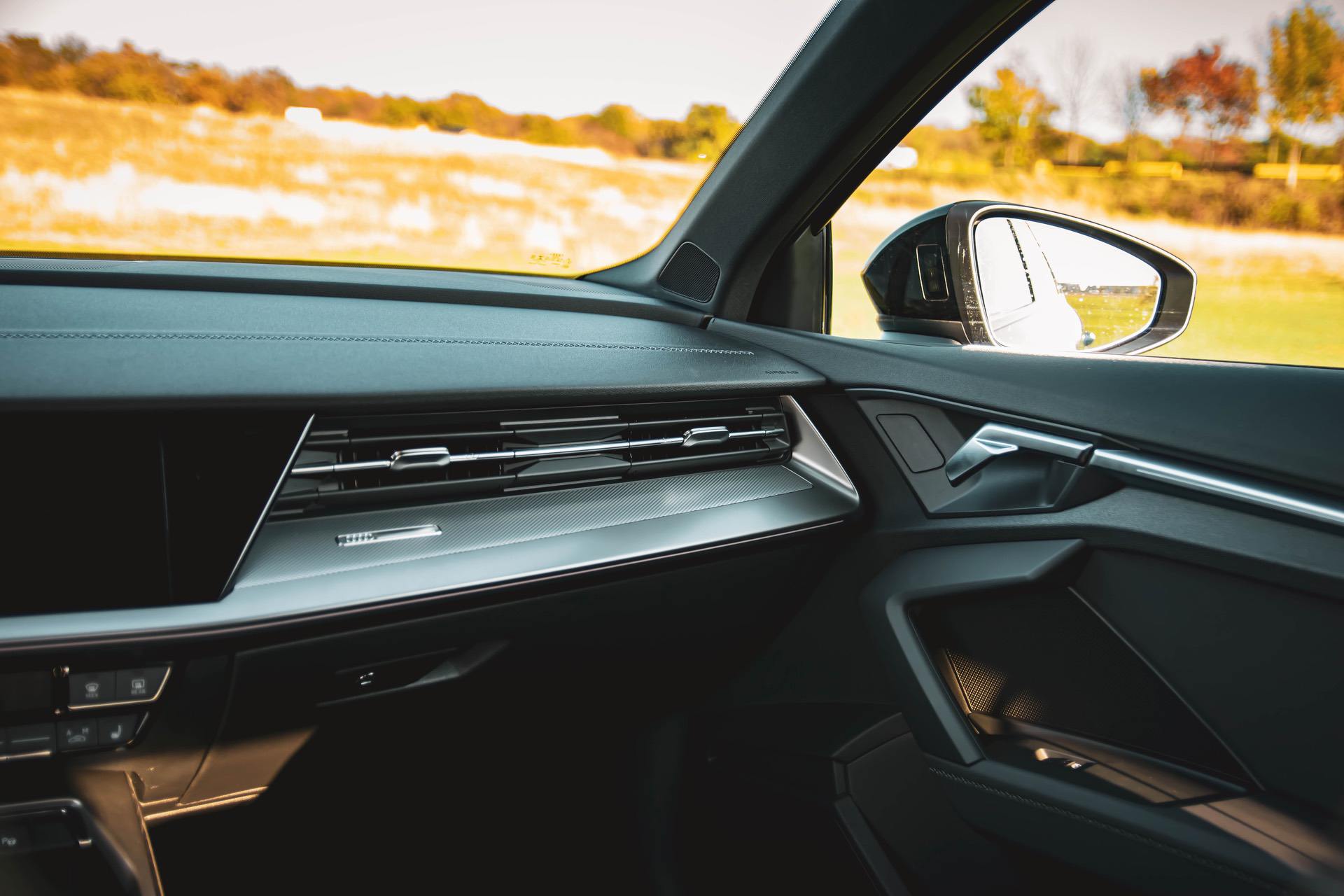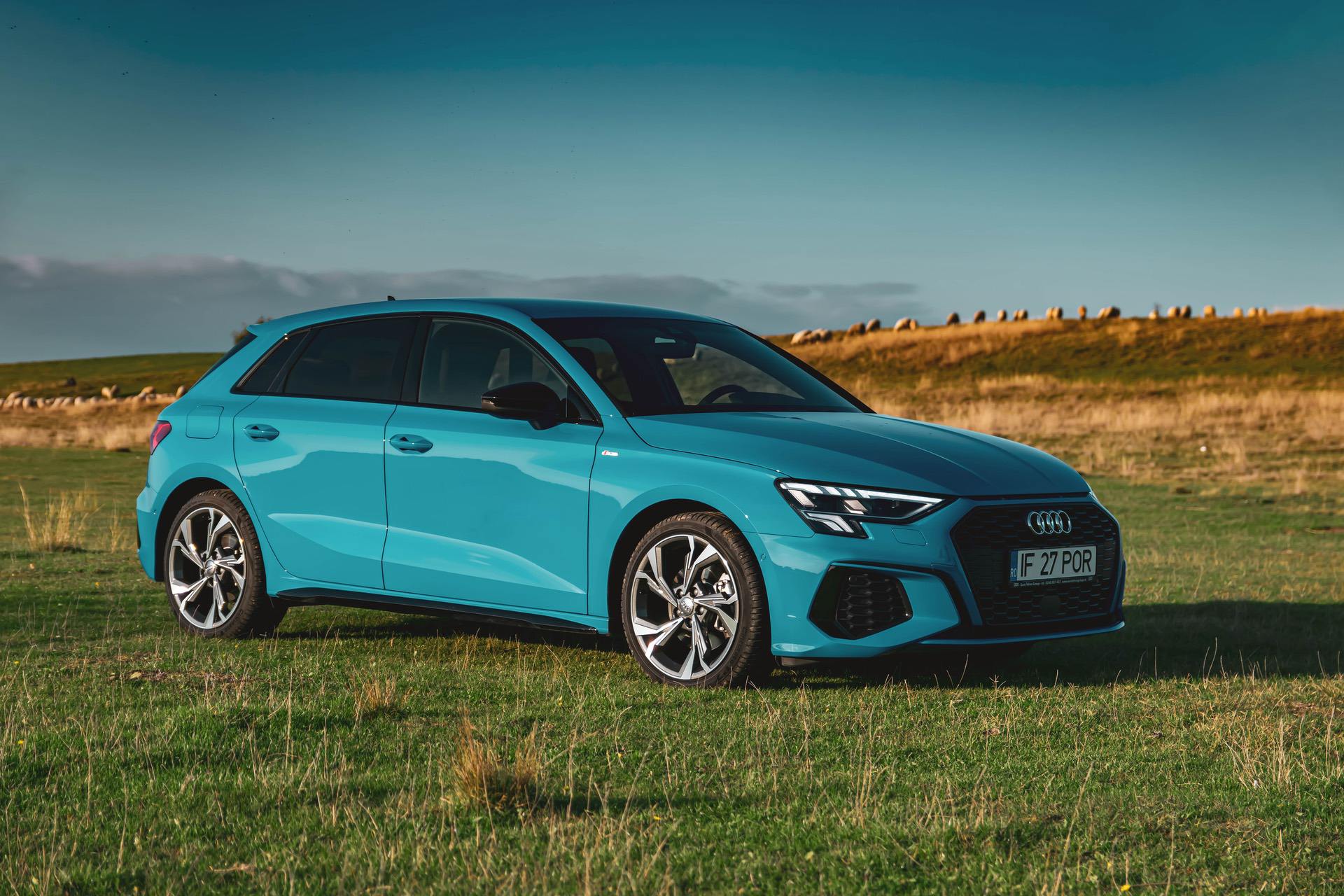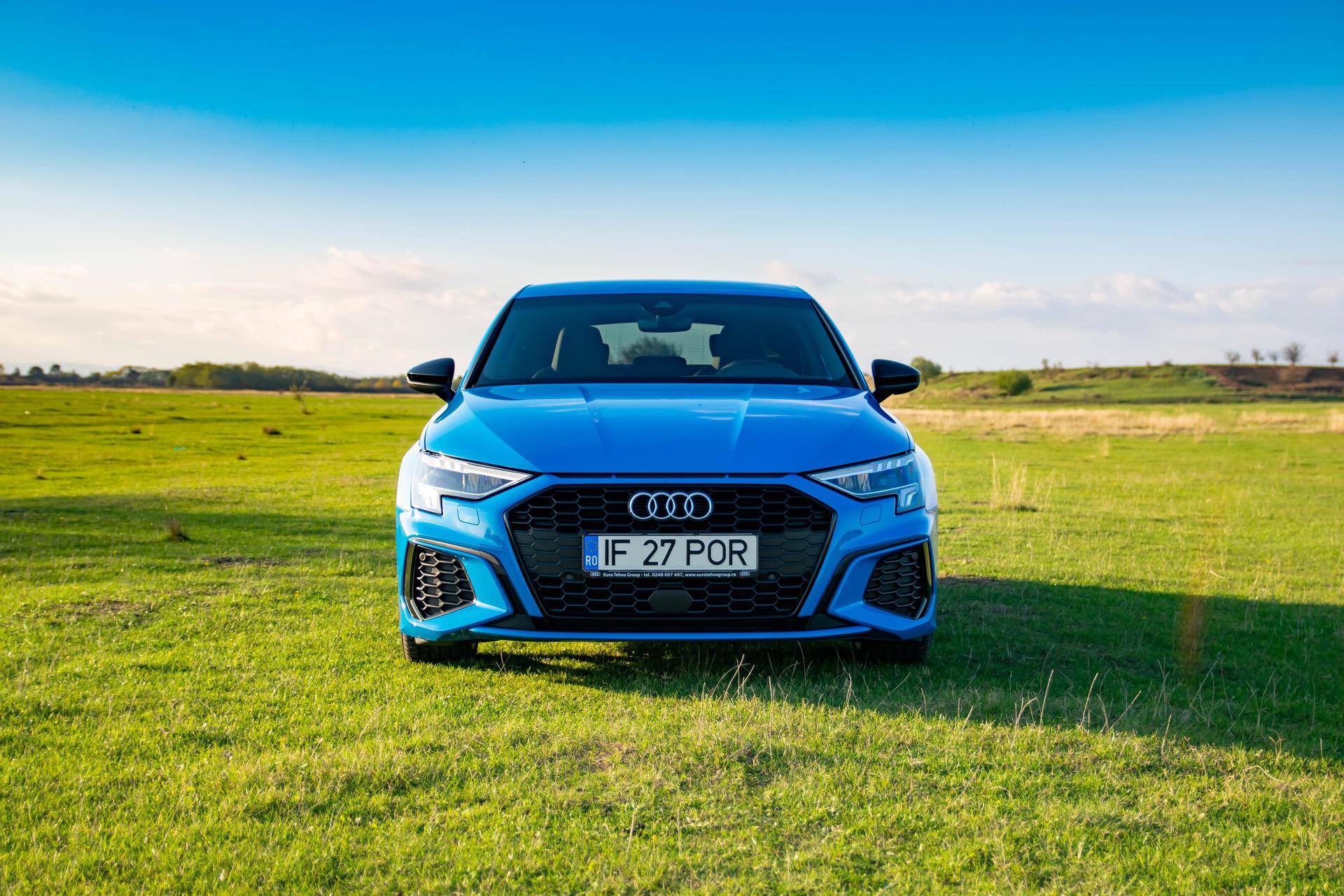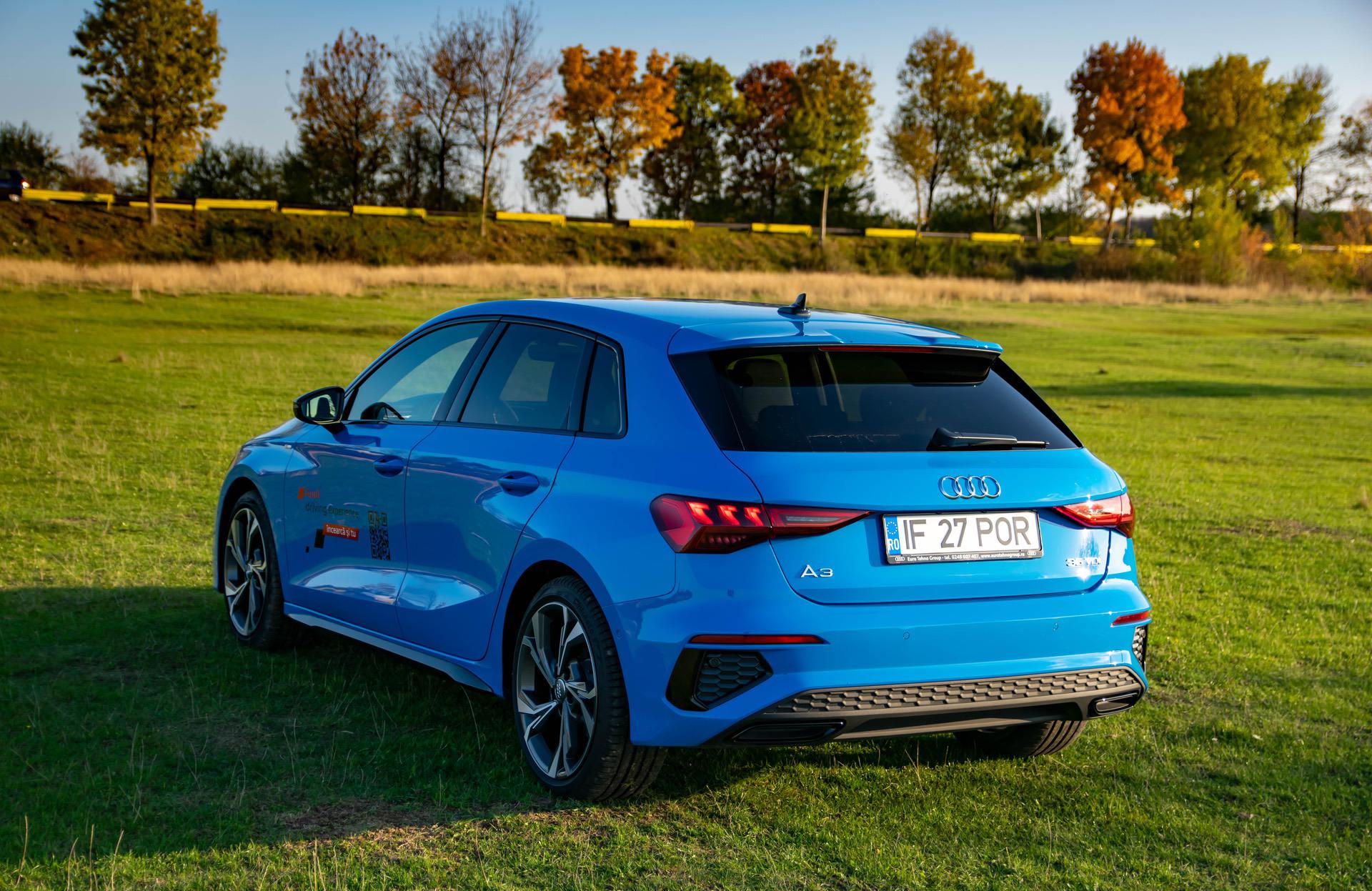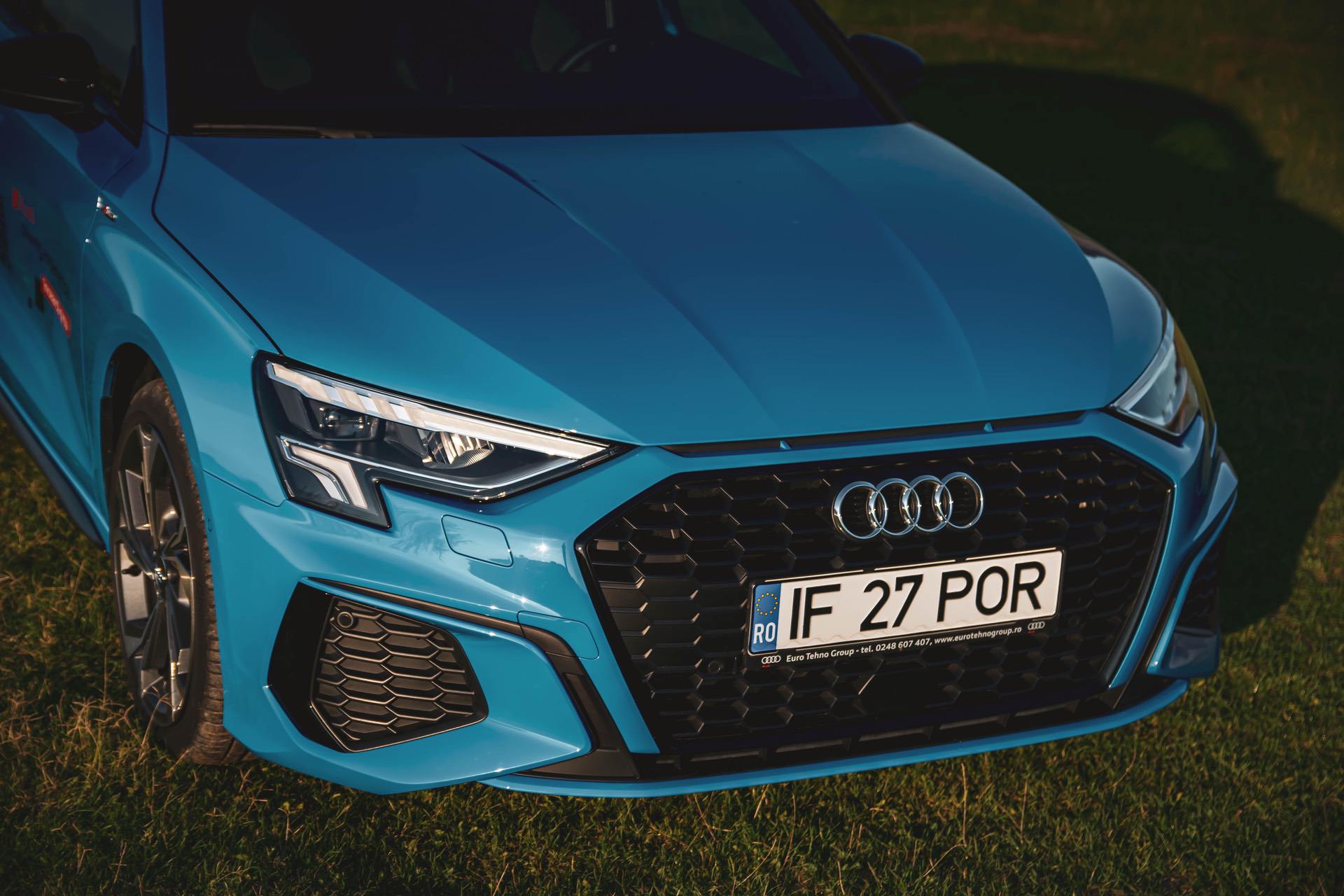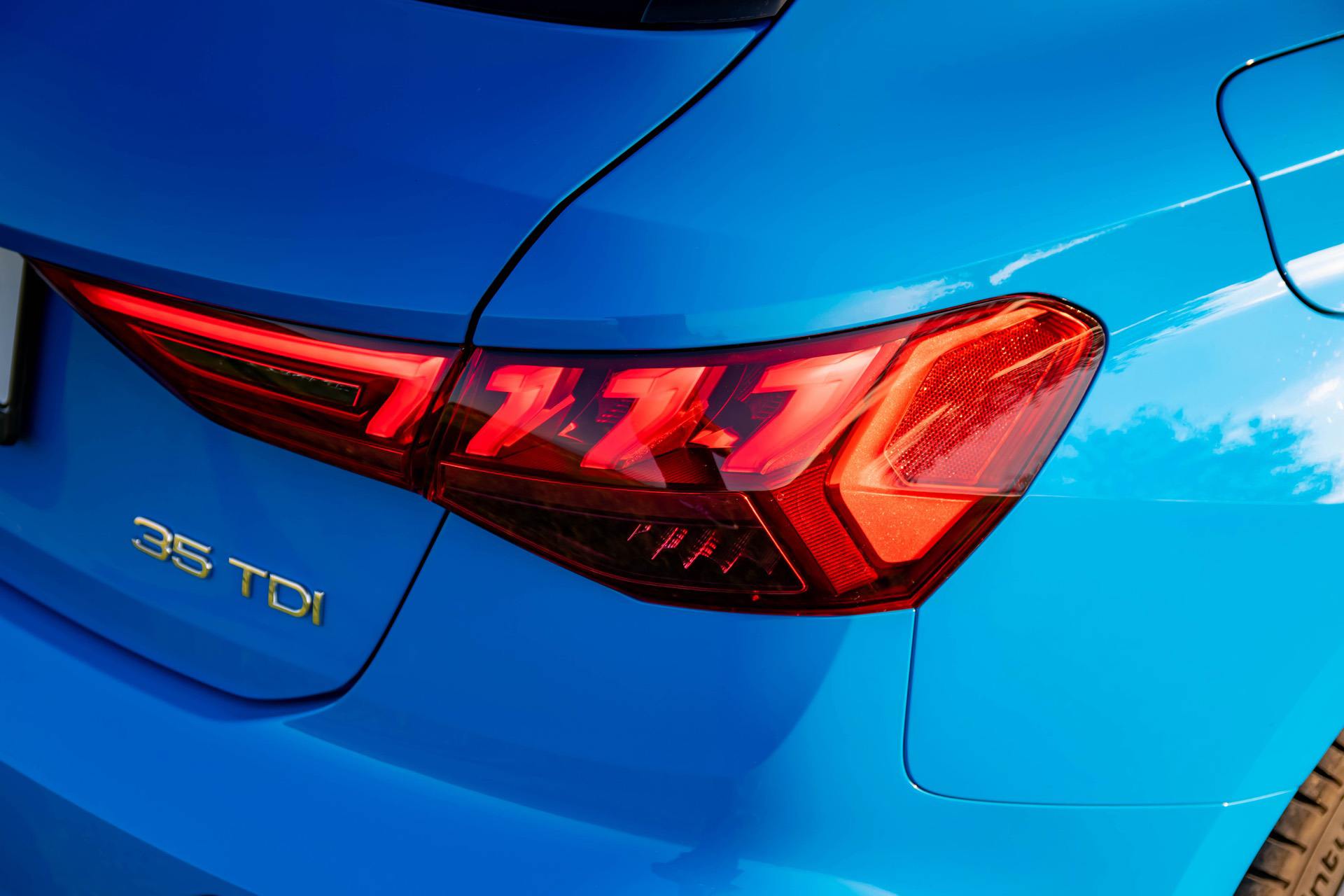Launched initially in the late 1990s, the Audi A3 was, from the get go, a popular offering from the German car maker. The biggest selling point was, without a doubt, the low-price tag but even so, the A3 meant you could buy a premium car from a reputable German company without too having to pay a premium price.
This year, the fourth generation of the A3 was launched and you’d be forgiven for missing it, considering it took place in Spring, when the Coronavirus pandemic was taking over headlines throughout the world. We didn’t forget about it though and decided to take it for a spin, to see what it’s capable of.
The Exterior Design
The latest generation Audi A3 Sportback comes with a lot of changes compared to its predecessor, some more … definitive than others. I’m referring to the fact that you can no longer buy a three-door version. Sales of the less practical, better looking model weren’t doing too well and, since Audi — like every other car maker — needs to be careful with how it’s investing its money. Because of that, the Ingolstadt-based manufacturer decided to drop the relatively unpopular three-door altogether.
What we’re left with is a stylish, practical and good-looking five-door version that might just be the best choice in the premium hatchback segment these days.
From the get go, the designers claimed that the overall shape of the new A3 was inspired by various elements from other cars in the VW Group’s history. According to Audi, inspiration came from cars like the original Audi Quattro, the RS2 Avant and even the current-day Lamborghini Urus. Therefore, I was intrigued to see how all these elements mix into one unitary design.
There are a few exterior design versions you can get for the A3, depending on the market you’re in. Our tester was wearing the costly S-Line exterior package and it was a stunner in the Turbo Blue paint. The front end differs slightly compared to its predecessor, with a wider and lower Singelframe grille dominating the front fascia, flanked by rather sizable blanked-out grilles. I know, I know, “fake grilles” but the truth of the matter is, they are necessary, as Audi points out, to keep the drag coefficient down and improve the efficiency of the car. To be more precise, the new A3 Sportback claims a Cd of 0.28, the best in class.
The S-Line package also comes with a special design for the headlights and the top side of the front bumper. The headlights now all come with DRL at the top but there’s also an LED cluster at the bottom that will have a different shape, depending on the package you go for. If you pay close attention, you’ll also notice a fake air intake vents under the hood line, harking back to the original Quattro model.
Around the back you’ll also notice the considerably longer spoiler at the top of the tailgate, twice as big as on the outgoing model, meant to improve downforce at higher speeds. The S-Line models also come with a diffuser with a honeycomb pattern on the rear bumper and some fake exhaust pipes.
The Interior Design
Once you open the doors, you’ll notice the S-Line treadplates that light up at night along with the exquisite S-Line seats that can be configured in a variety of combinations. Our tester had leather on the sides and a textile material down the middle, a good combination if you don’t want to spend too much. I’ve seen other models with quilted Alcantara in the middle, though, and they are simply spectacular. Those are basically the only differences brought on by ticking the S-Line package from the options list.
The interior design is classy and simple, with a driver-oriented layout that makes you feel right in the center of attention. The instrument cluster is digital, as it has been for all Audis for quite some time. The new A3 also gets the larger 12.3-inch cockpit that looks crisp, has a high resolution and smooth animations along with all the information you could need. It’s customizable and you can pick between three different designs for the speedometer and tachometer: Classic, Sport and Dynamic.
Apart from all the info about the car and multimedia you get displayed in the center of this digital instrument cluster, you can also have the map shown in various different sizes, which is a nice touch too. On the sides of this cockpit you’ll find two air vents and if their shape seems remotely familiar, it’s because they have been ‘inspired’ by the Lamborghini Urus.
The infotainment screen is also crisp and has nice graphics, although it’s a bit smaller at 10.1 inches. Nevertheless, it’s easy to use, intuitive and well-integrated into the overall design of the dashboard. You get the feeling it wasn’t put there as an afterthought as it is the case in many other cars.
Furthermore, there are physical buttons you can use to adjust the air conditioning and other climate functions beneath the infotainment screen. That’s a different approach compared to bigger Audis in the range, which have a climate control screen instead, and I have to say I like it. Personally, I’m not a big fan of using touch-sensitive screens. This approach, however, makes more sense and is easier to use without taking your eyes off the road.
There’s enough room up front even for larger adults such as myself and the seats are comfy, offering great side support for spirited driving sessions. On top of that, Audi says it’s using recycled plastic to make their inlays. According to the German company, each A3 uses 45 discarded 1.5-liter plastic bottles in every set of seats with the new material.
The one thing I can complain about though is the plastic used in certain parts of the car, mainly on the doors. The door panels are split in three sections with different textures. The middle part is made of a soft material that feels nice to the touch, similar to the soft plastic used on the top of the dash. Then there’s the top part, that’s made of a somewhat hard plastic, with a difficult to describe texture. It’s not as hard as the one used for the door pockets but definitely harsher to the touch than the middle section. It definitely doesn’t feel premium, as it should on an Audi. That’s basically the only fault I found inside the cabin of the new A3 and that says a lot.
What impressed me the most though is the room you get in the back. I could actually fit back there, behind the driver’s seat which had been adjusted to my comfortable driving position. For reference, I’m 6-ft tall, therefore this was truly impressive for such a small hatchback. I had room for my legs and, most impressive, my head. Something I couldn’t say about the BMW 1 Series or the A-Class. Color me impressed.
The new A3 rides on the same improved MQB platform as the Golf 8 or the Seat Leon and the Skoda Octavia among other cars so you’re bound to find some similarities between them. From the technology offered, to the comfortable ride or the engine/gearbox combinations and even design. Automatics get an electronic gear selector that looks basically the same on all cars and even on the new Porsche 911, just to understand how far things have gone with parts sharing.
The Driving Experience
And the A3 does handle well, there’s no doubt about that. Our tester was fitted with the 2.0 liter TDI diesel engine, which means it had 150 horsepower and 360 Nm (265 lb-ft) of torque at its disposal. The powerplant was hooked up to a 7-speed dual-clutch gearbox that sent power to the front wheels alone as Quattro all-wheel drive is not available on certain models, thought it is coming. The engine range will vary depending on the market and goes from 1-liter 3-cylinder petrol engines with just over 100 HP to hybrid models with over 200 HP using a 1.4-liter turbocharged petrol engine and an electric motor.
Therefore, with our 2.0 liter, 150 horsepower engine, we were right in the middle of the range and I have to say, you don’t really need more power. I was pleasantly surprised by how agile and quick this car felt, despite what may seem like a rather limited power supply. The gearbox was also one of the highlights, keeping up with all my inputs on the fly. A stab the throttle, even ever so slightly, and it would downshift to keep up with my intentions almost immediately, even in Comfort mode. It would also keep up under hard acceleration and I was often surprised to see speeds over 100 km/h without even noticing, a true testament to the refined ride the car had and the resources at its disposal.
The 2.0 liter mill was rather well isolated from the cabin, well balanced and muffled out. Admittedly, our tester also came with double-glazed windows up front to make the atmosphere more serene inside. All those features, combined with the smooth gear shifts from the DSG gearbox and the torque available from down low make for a pretty interesting sensation down the road.
There is a noticeable difference when switching between the different driving modes. Dynamic mode will make the throttle sharper and the suspension stiffer, to keep things in check better. Since I mentioned the suspension, you should also know that there are two different setups available. For cars with under 150 HP, the rear axle has a torsion-beam setup which reduces both comfort and fun. All those above that figure get independent suspension at the back, just like our tester did. And I have to say I was surprised by how well it hugged the road. The car felt composed all the time and well grounded, at least at legal speeds. And that’s all you need, to be honest.
What impressed me even more though is how efficient this car was. I simply couldn’t believe the kind of numbers I got driving it. The worst figures were recorded around town, naturally, but they weren’t bad at all. I saw an average of around 7 l/100 km covered (33.6 MPG US, 40.3 MPG UK), a good start, I thought to myself. Then I left the city and noticed that the average fuel consumption dropped to 3.6 l/100 km covered (78.4 MPG UK, 65.3 MPG US) at an average speed of 80 km/h (50 mph).
Then I hopped on the highway to see how it does there and observed a fuel consumption of 4.9 l/100 km (48 MPG US, 57.6 MPG UK) at an average speed of 130 km/h (80 mph). Those are amazing figures, to be honest and, combined with the refined ride, smooth gearshifts and quiet cabin make the Audi A3 35 TDI a proper threat for all other cars in the segment.
Conclusion
And that’s how we arrive at the conclusion of this review: where does the new A3 fit in the premium hatchback segment? Well, it’s the best offering in my book, by a noticeable amount. It looks better than both its rivals (even though looks might be subjective), has a nicer design inside (even with that cheap plastic on the doors), and offers more room inside. And while I did expect it to be the least fun to drive car compared to the 1 Series and A-Class, I found it to be class leading in that department too, at least compared to similar configurations from its German rivals.
Therefore, the 2020 Audi A3 offers great performance, a good driving experience and is also quite practical, especially compared to its counterparts. Is it a perfect car? No, as well know there is no such thing, but it is the best choice in the segment right now.
2020 Audi A3 35 TDI Sportback
Exterior Appeal - 9
Interior Quality - 8
Steering Feedback - 8
Performance - 8
Handling - 8
Price Point - 9
8.3
The 2020 Audi A3 offers great performance, a good driving experience and is also quite practical, especially compared to its counterparts. Is it a perfect car? No, as well know there is no such thing, but it is the best choice in the segment right now.


